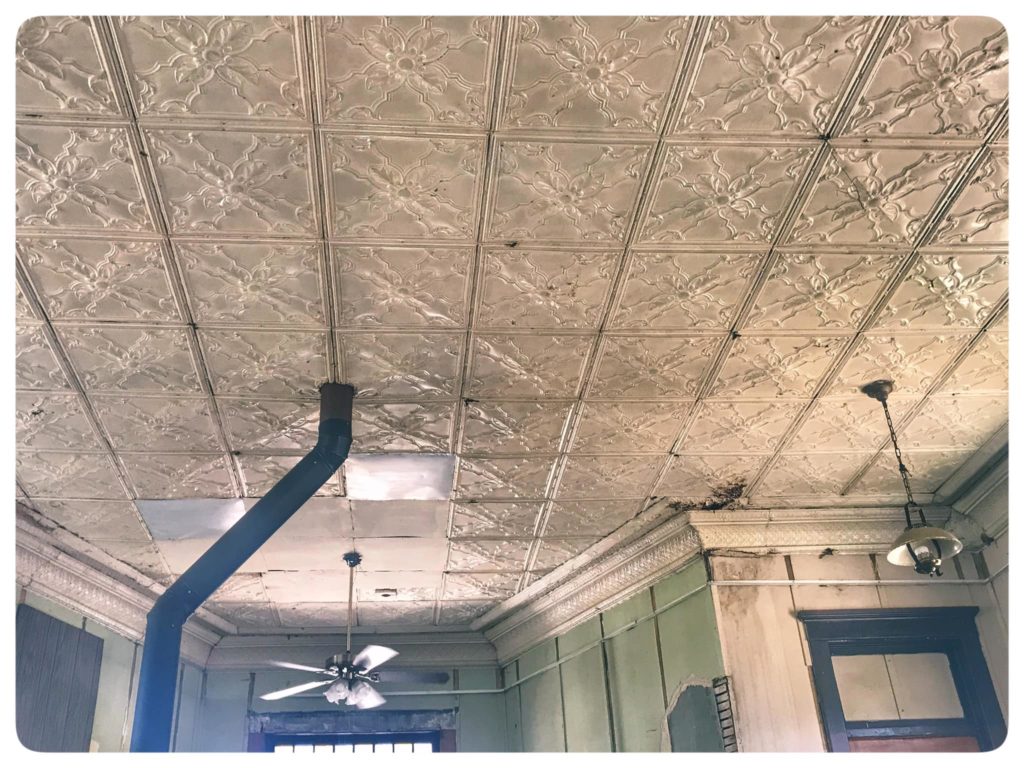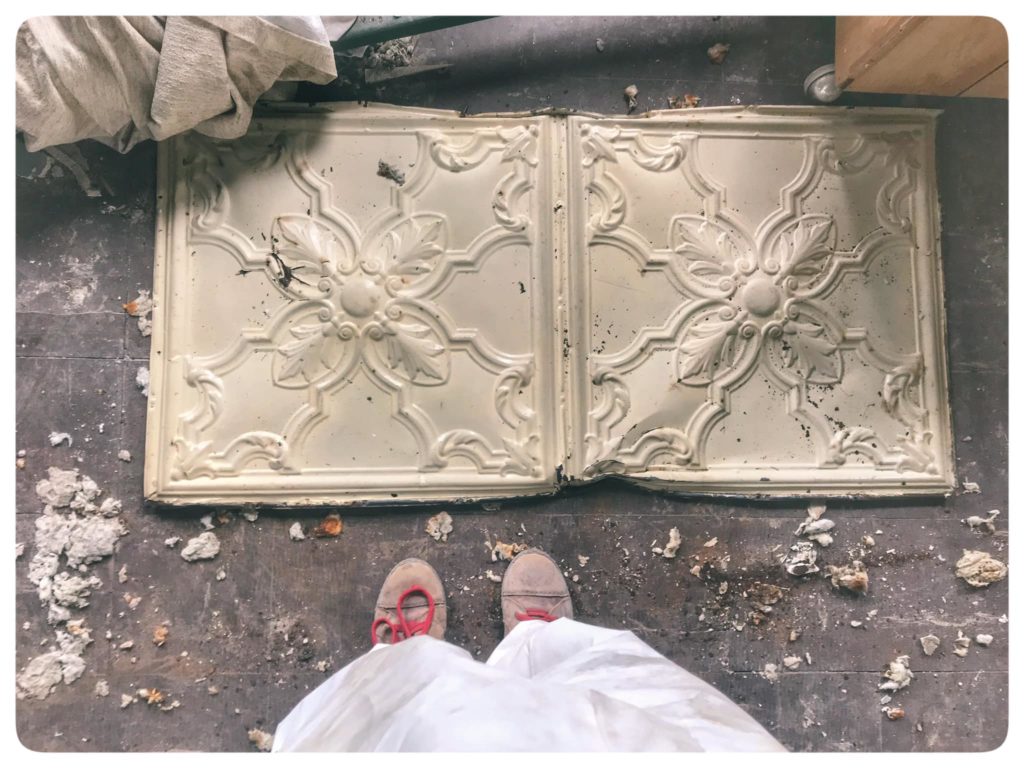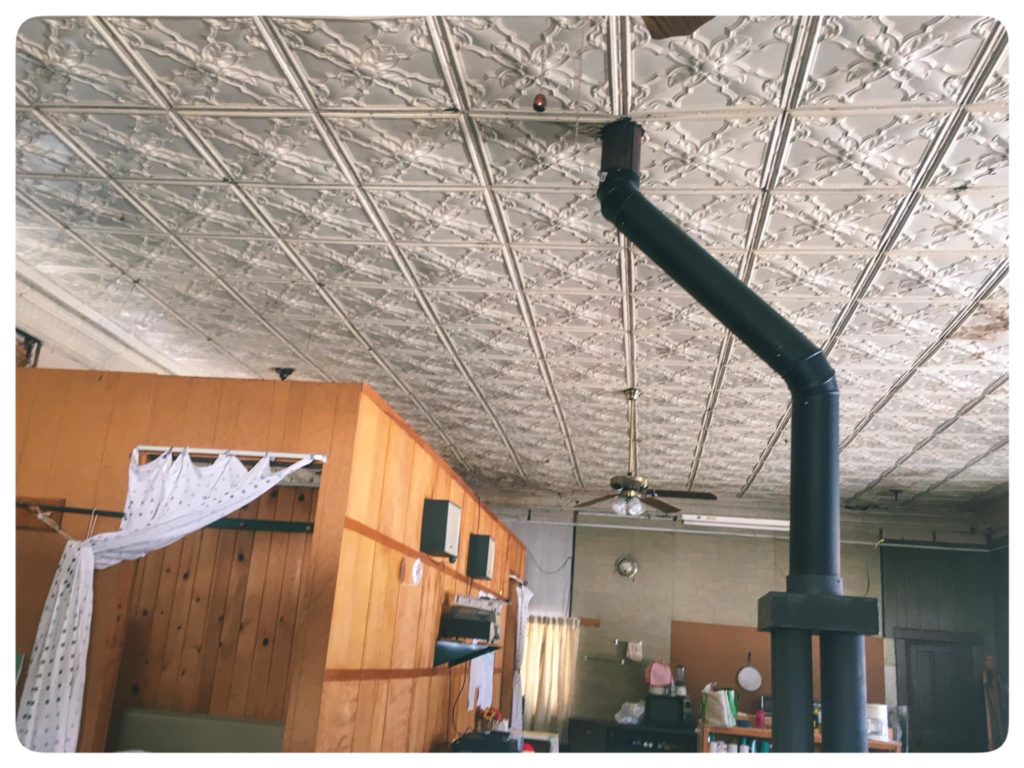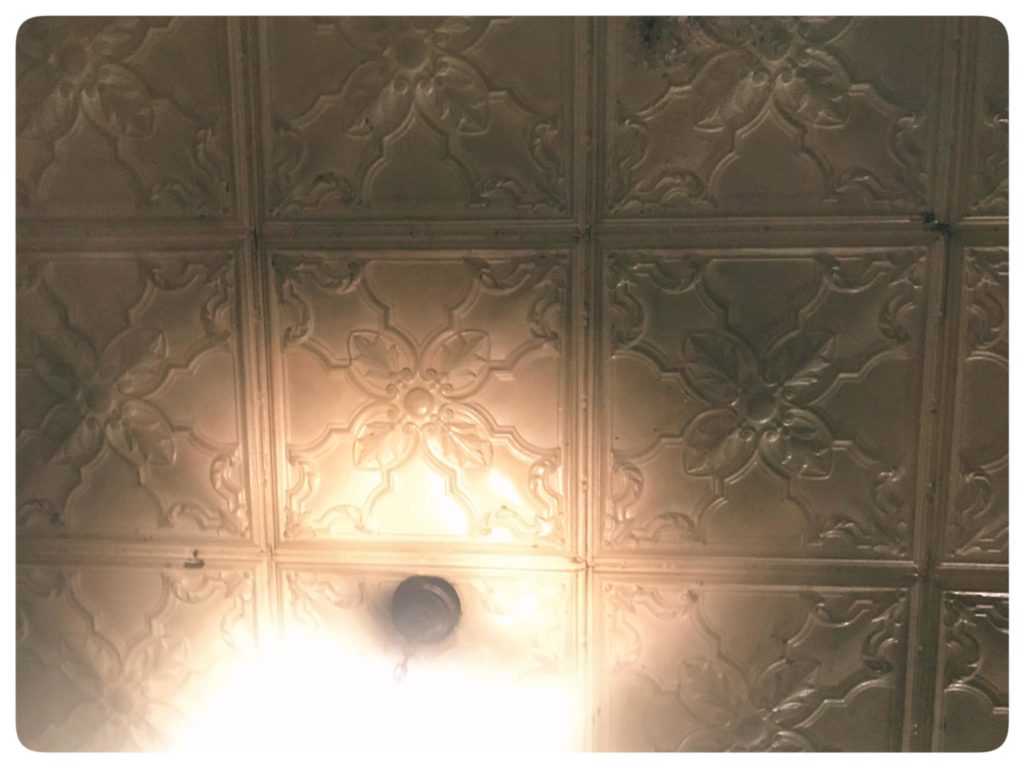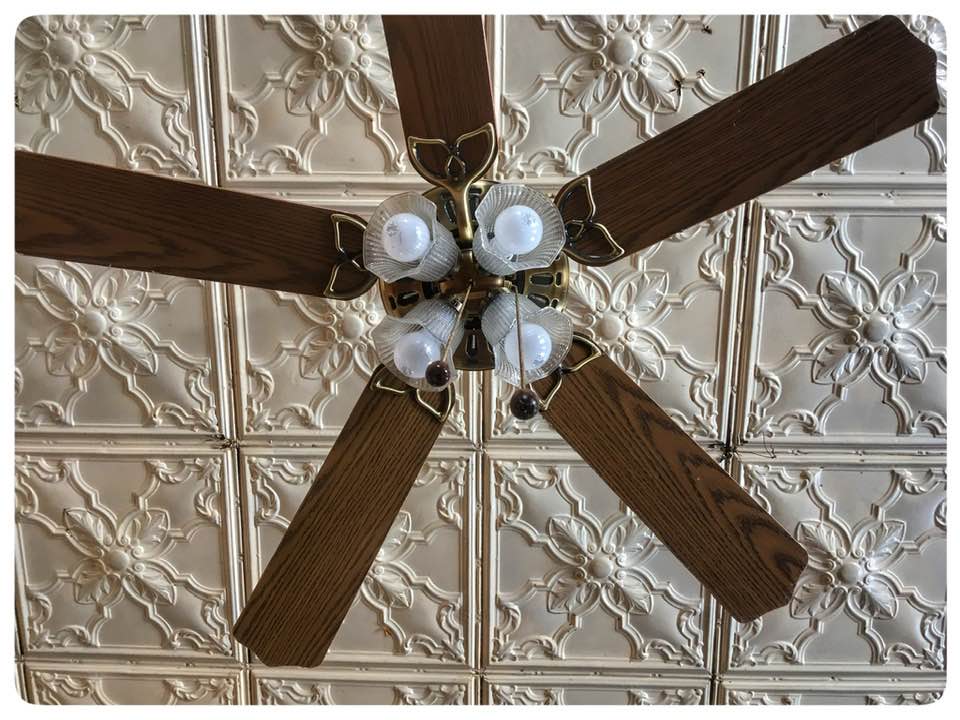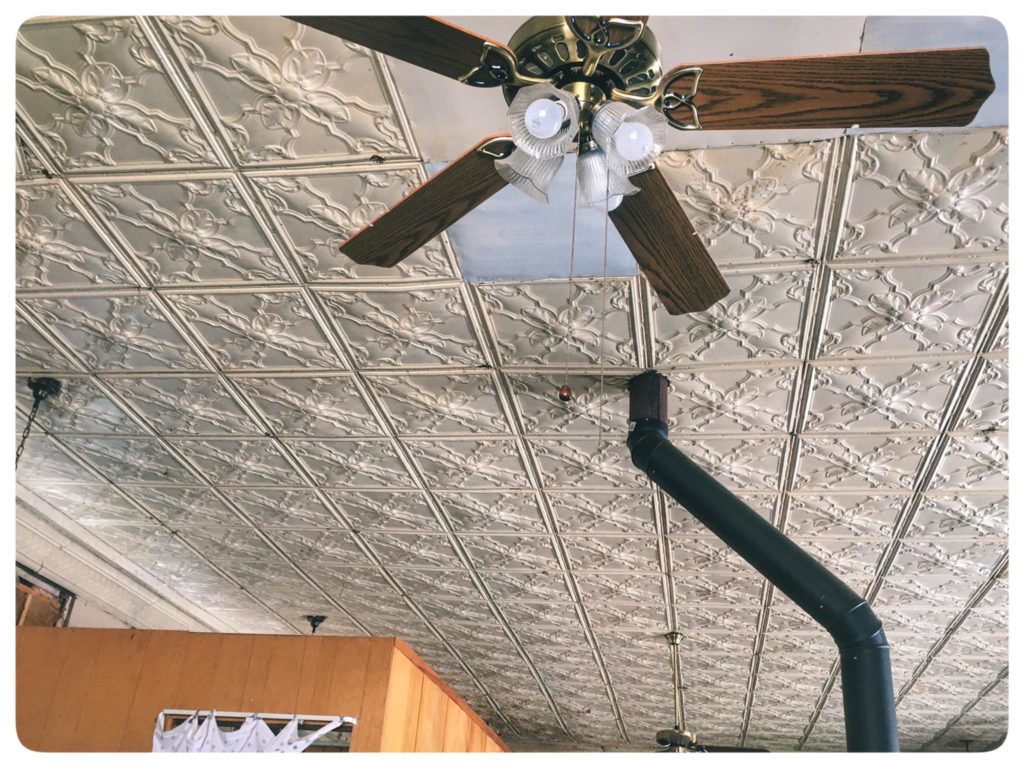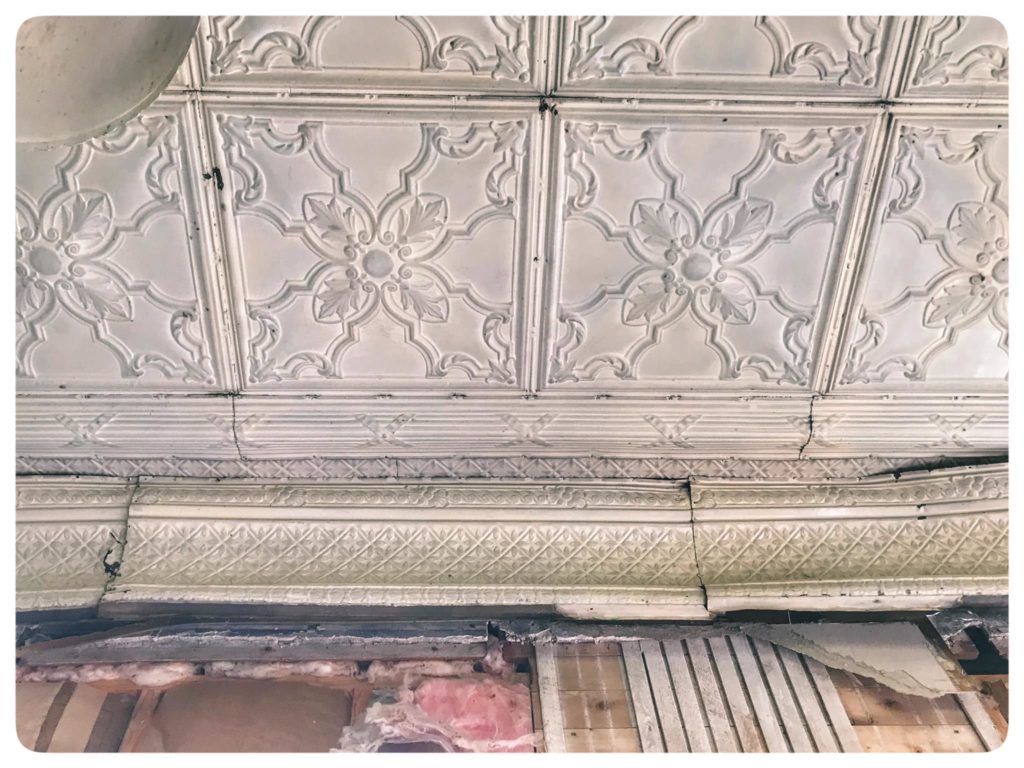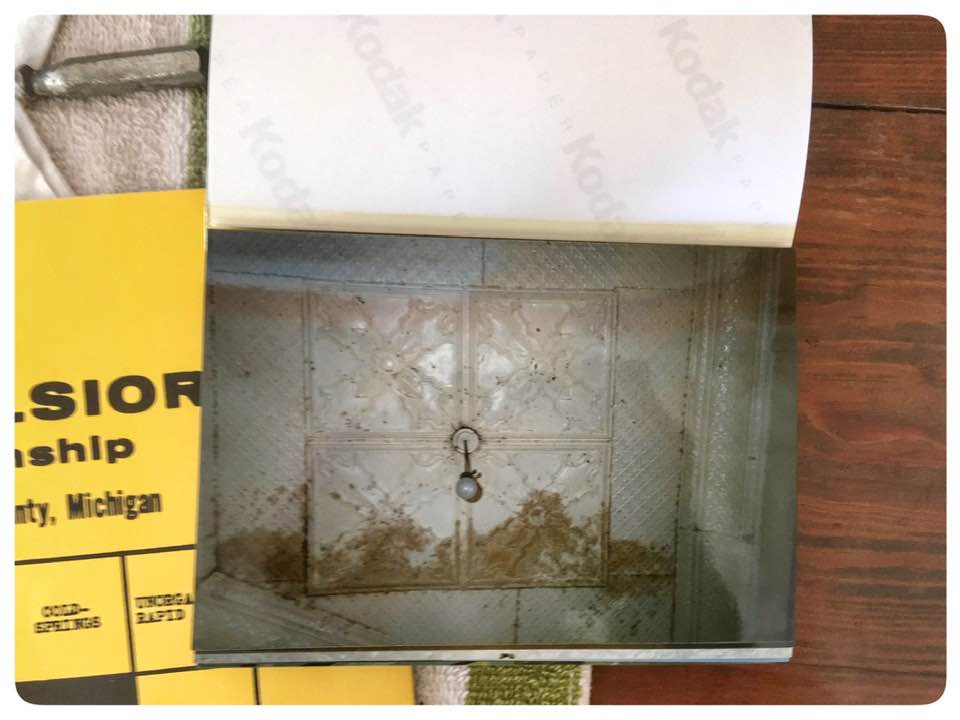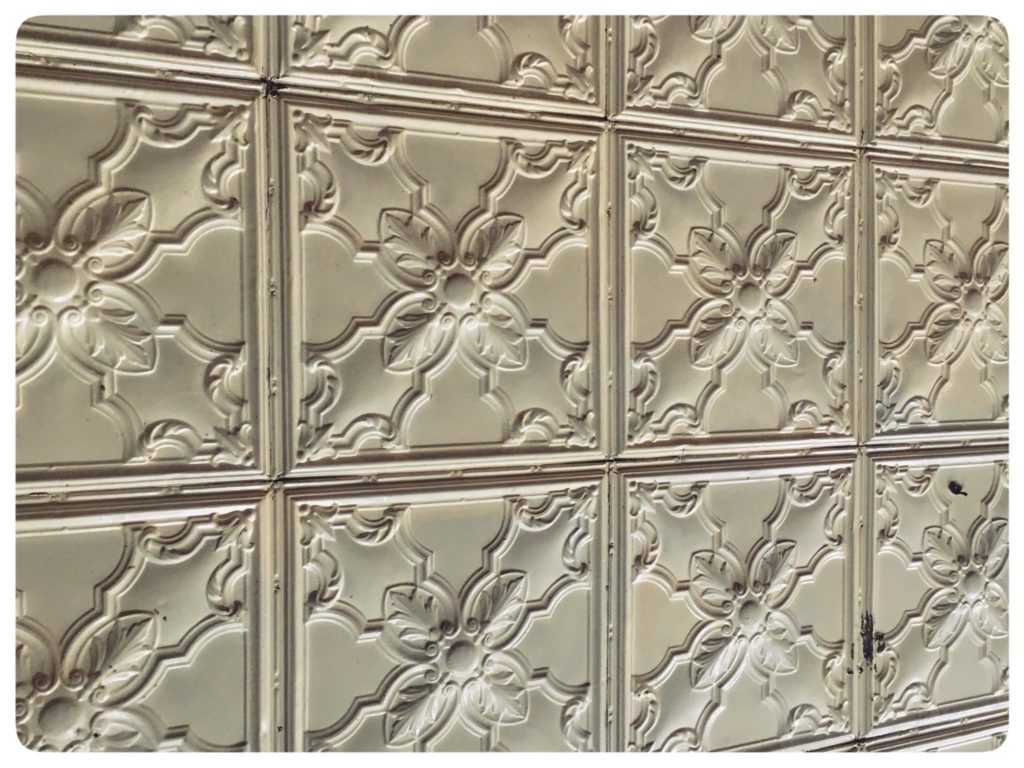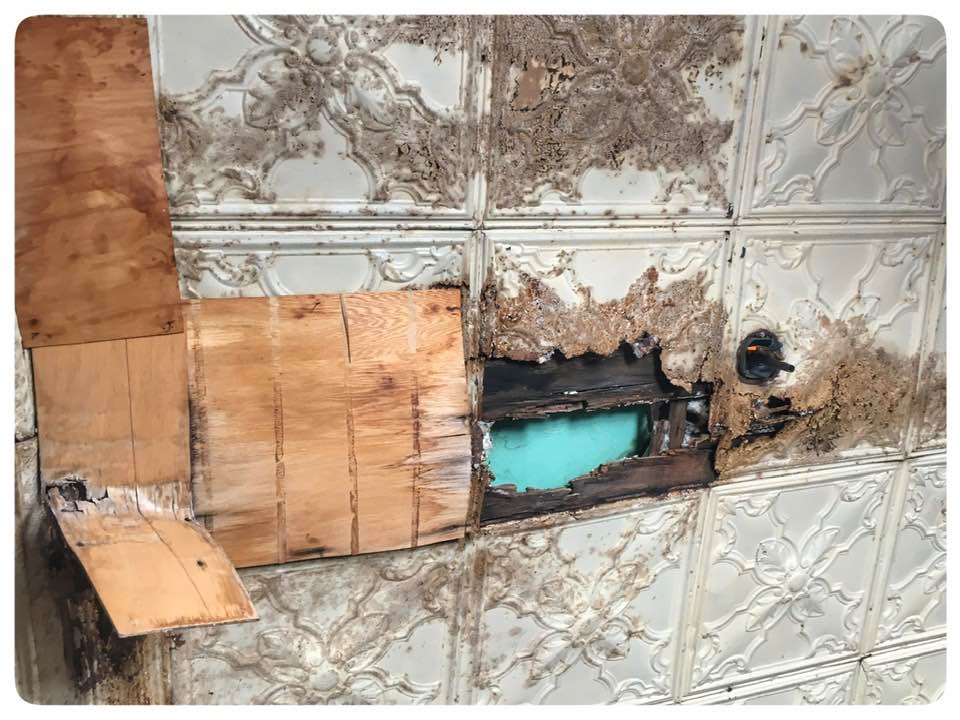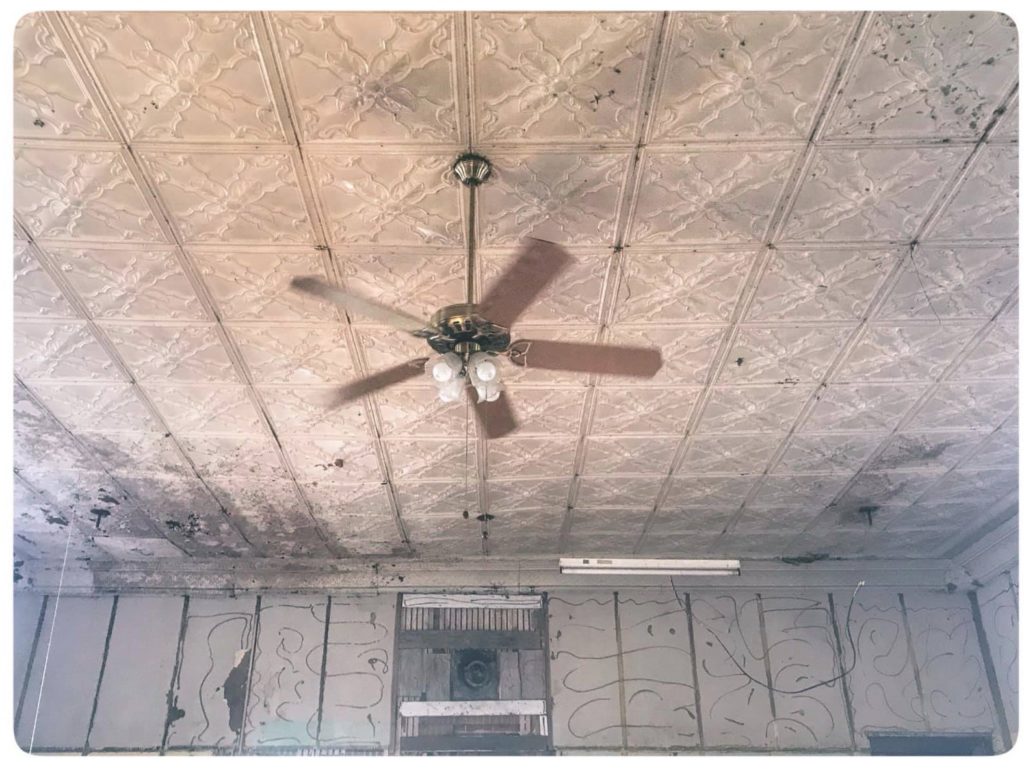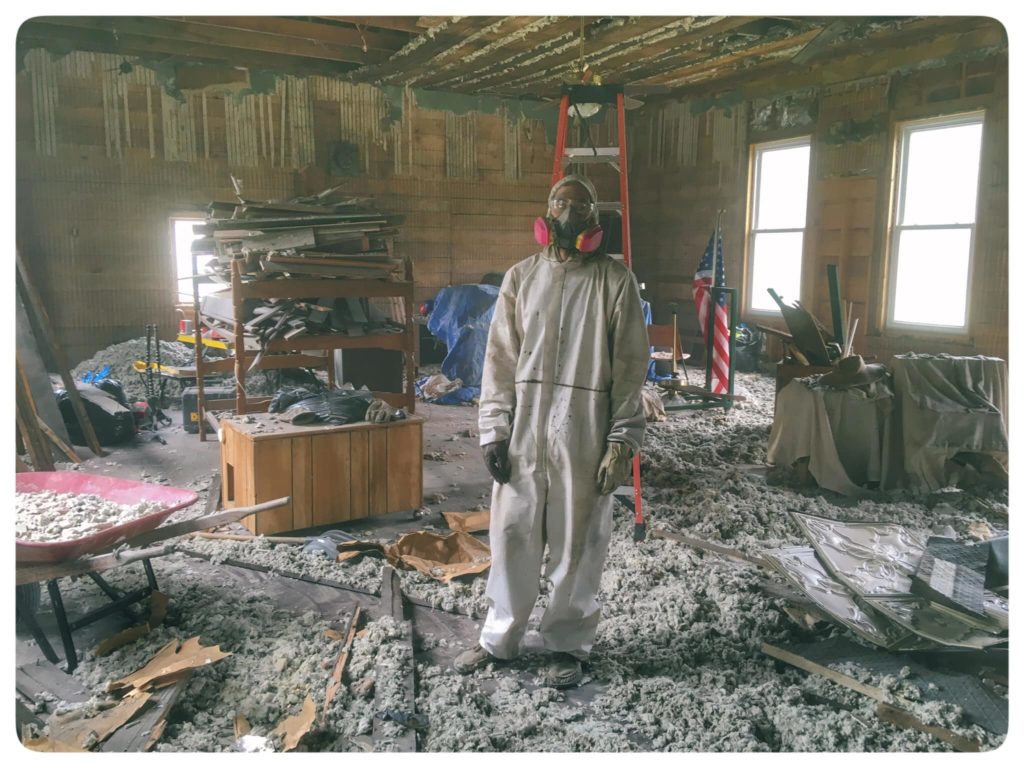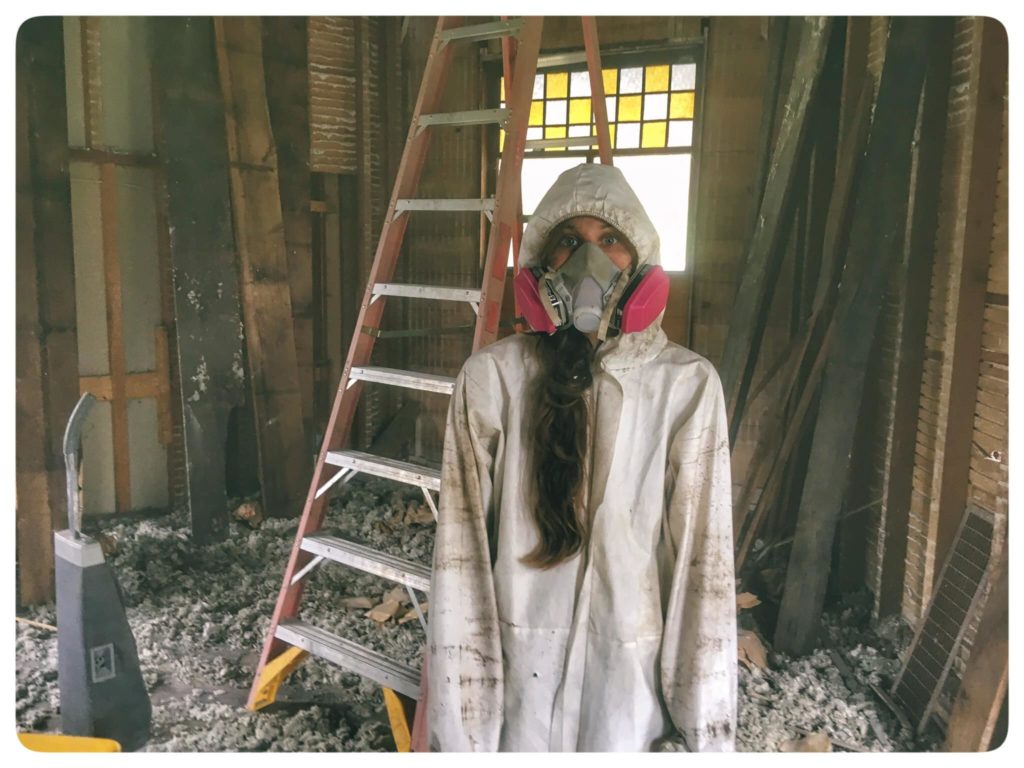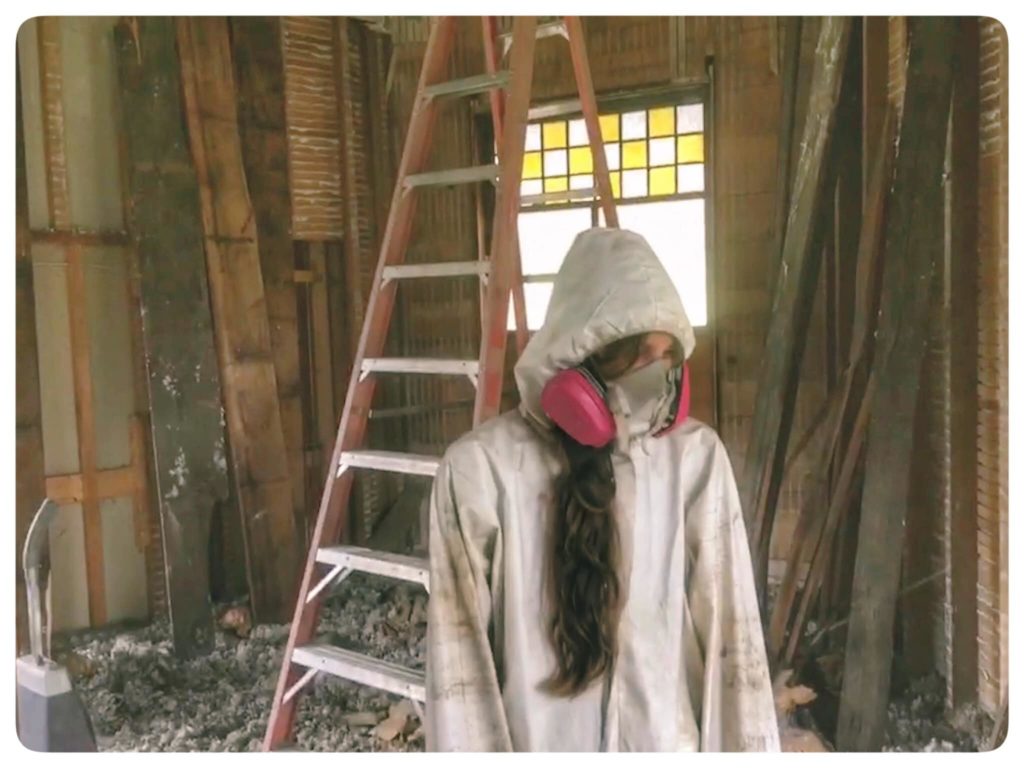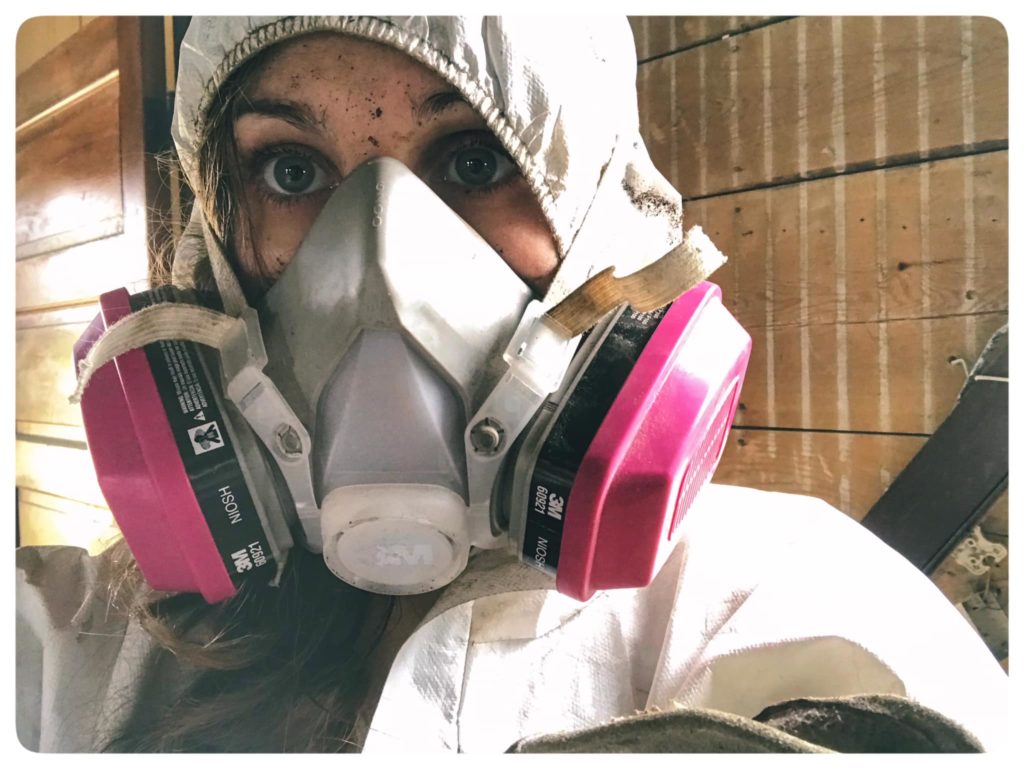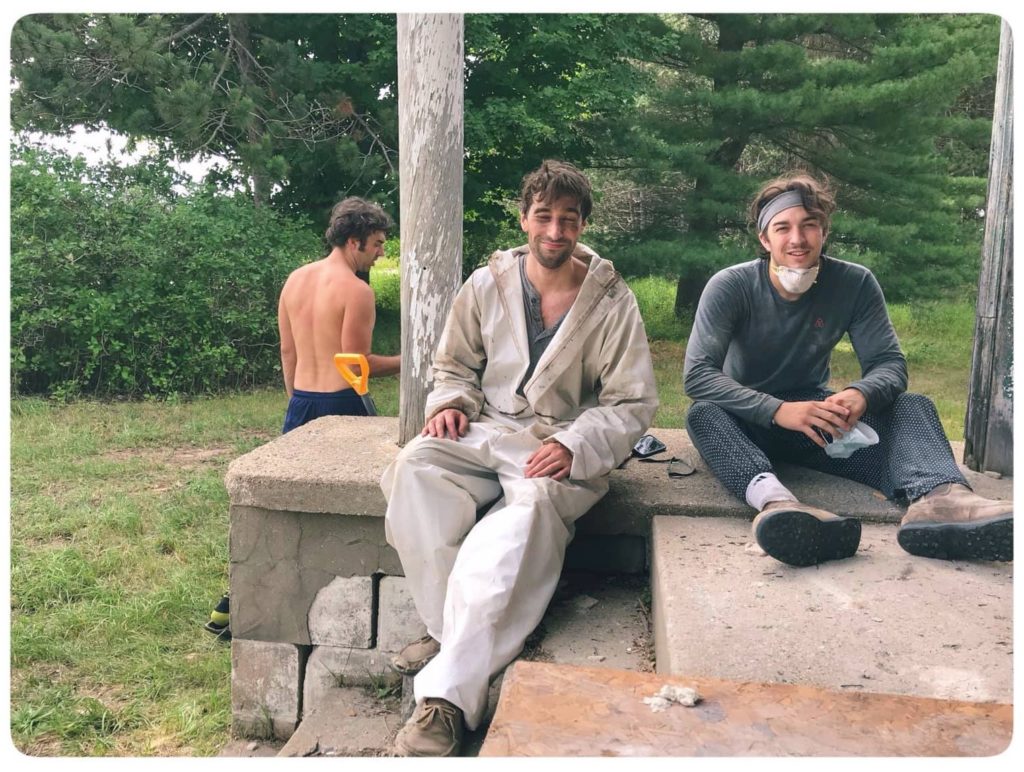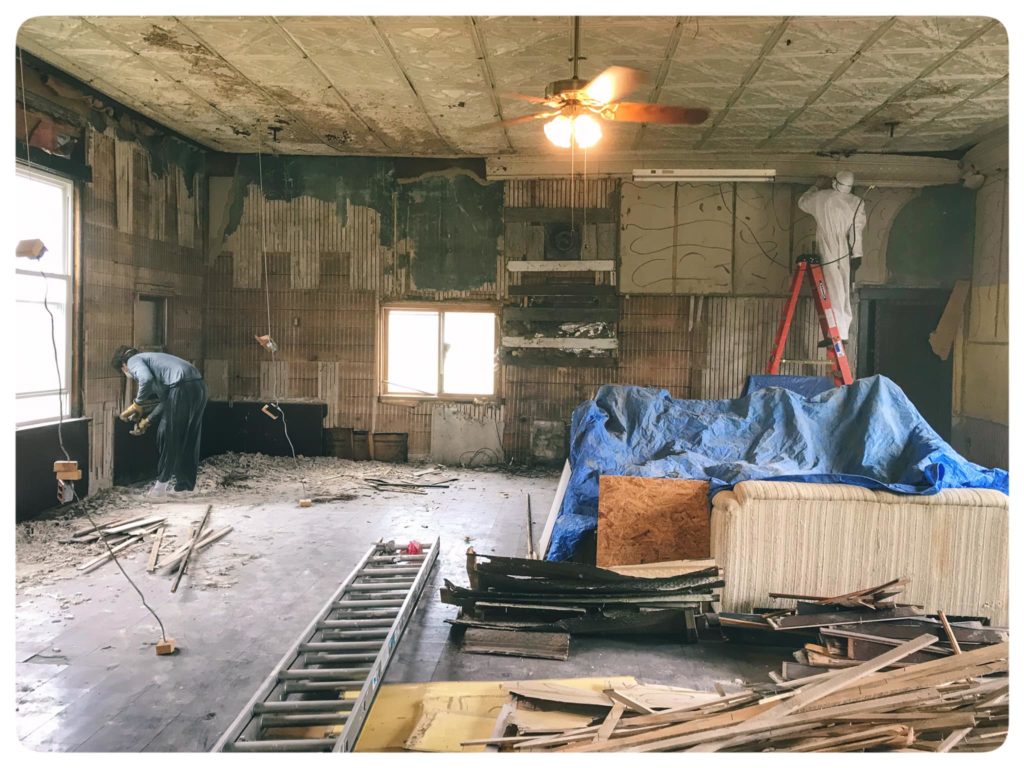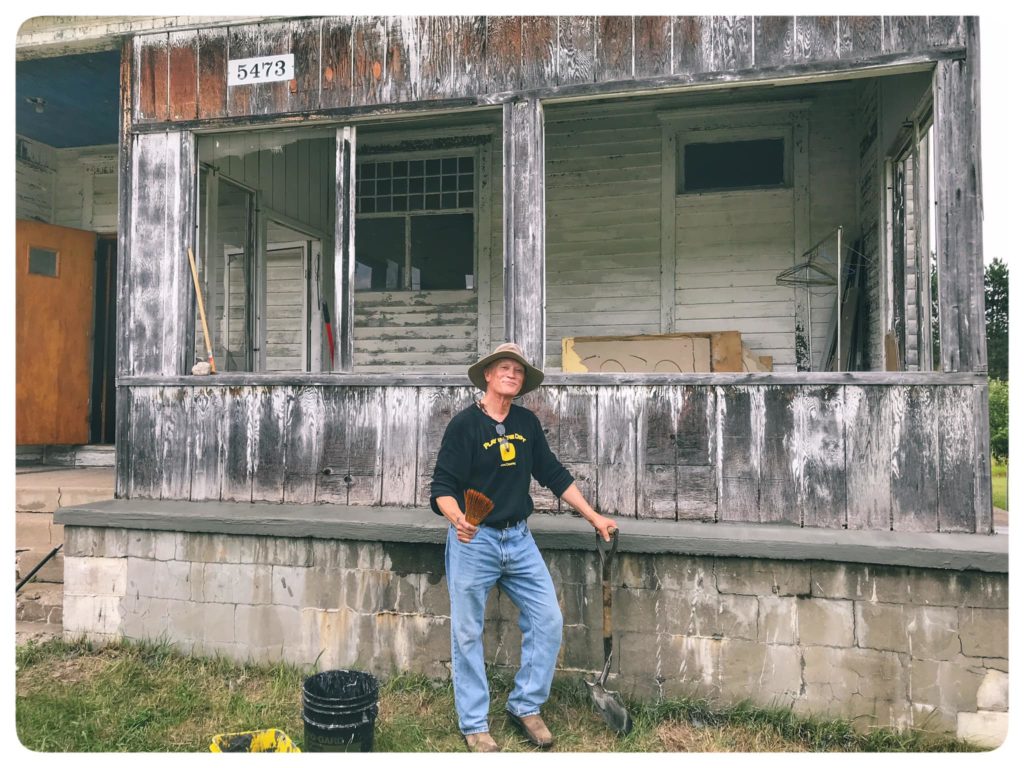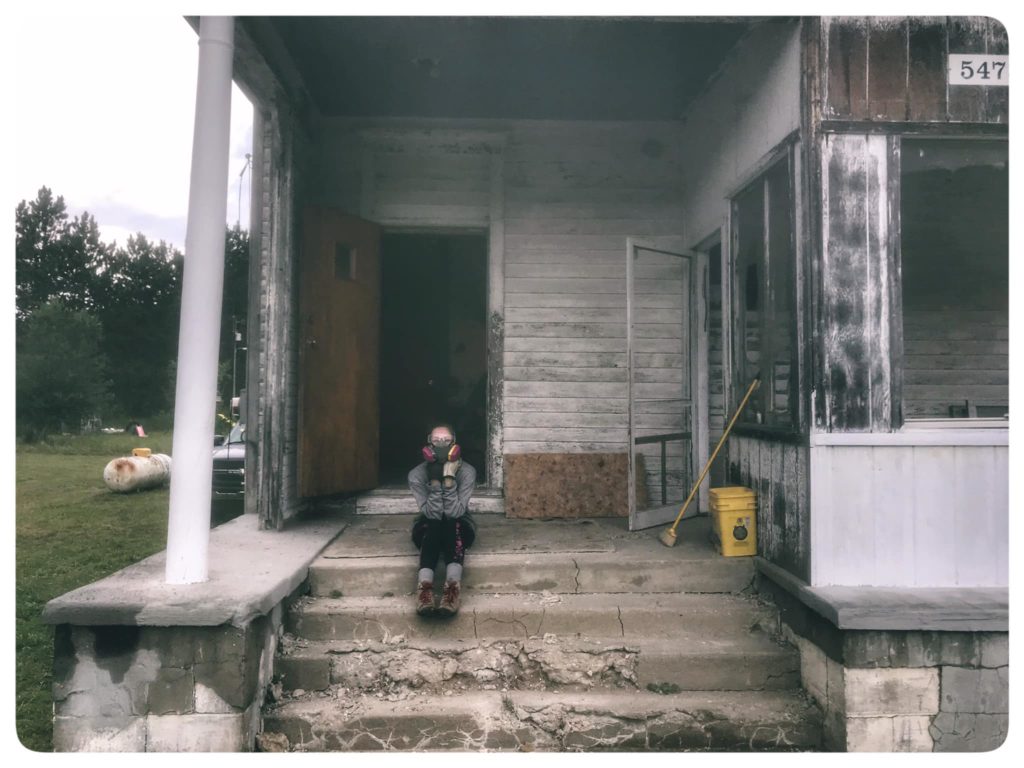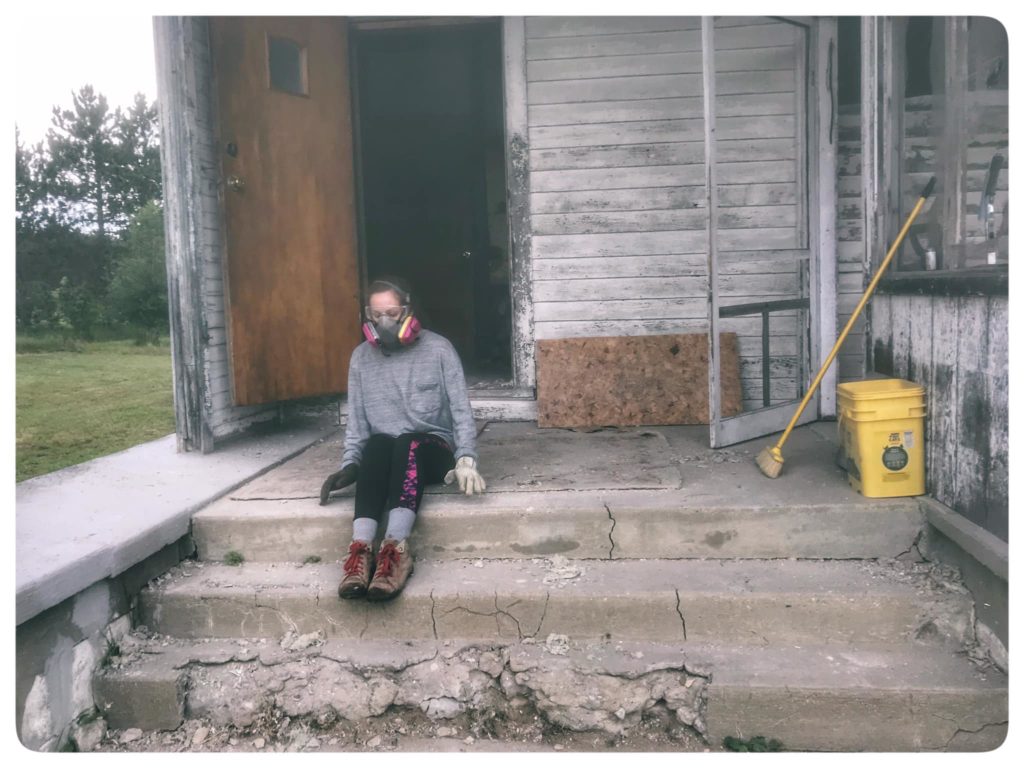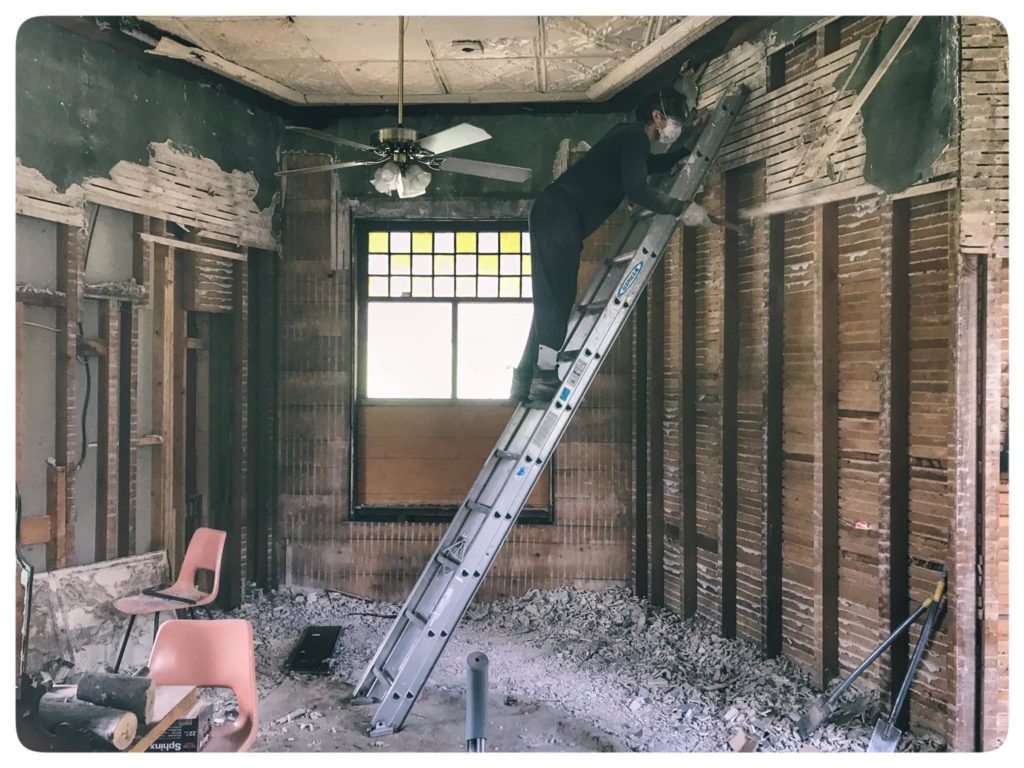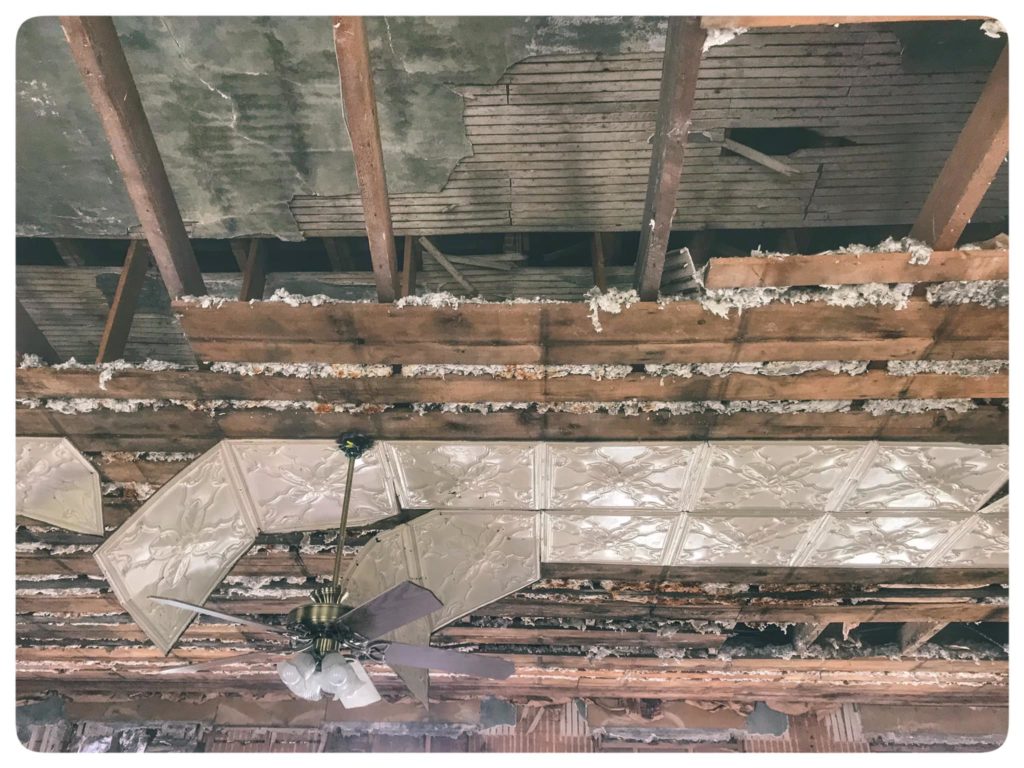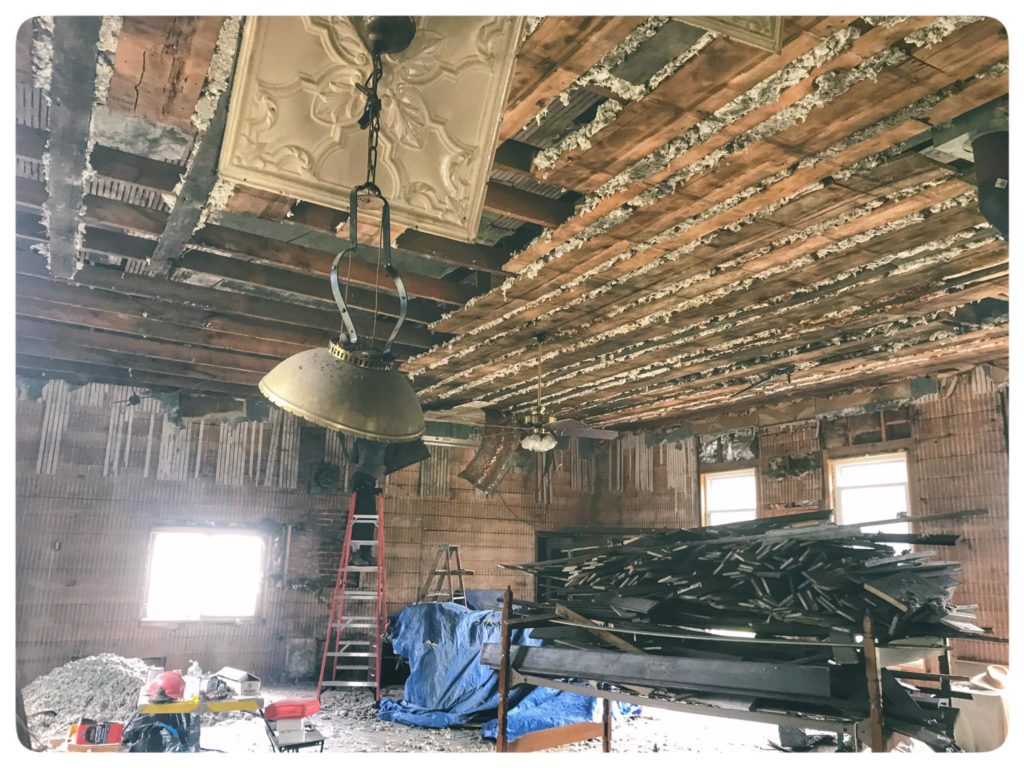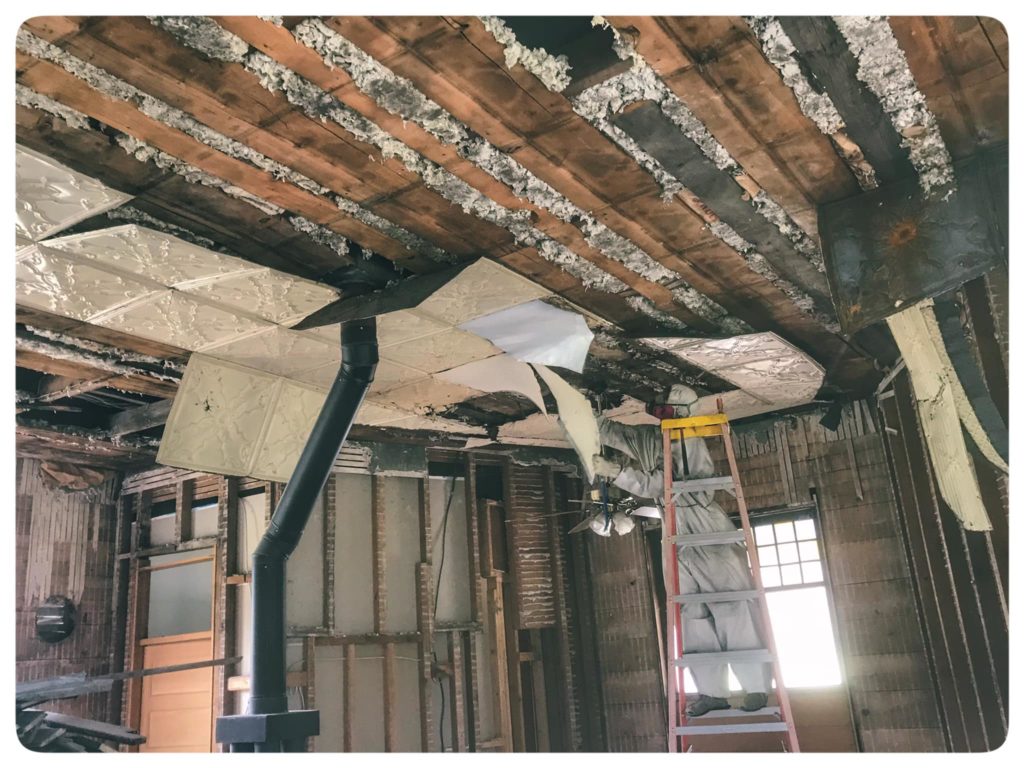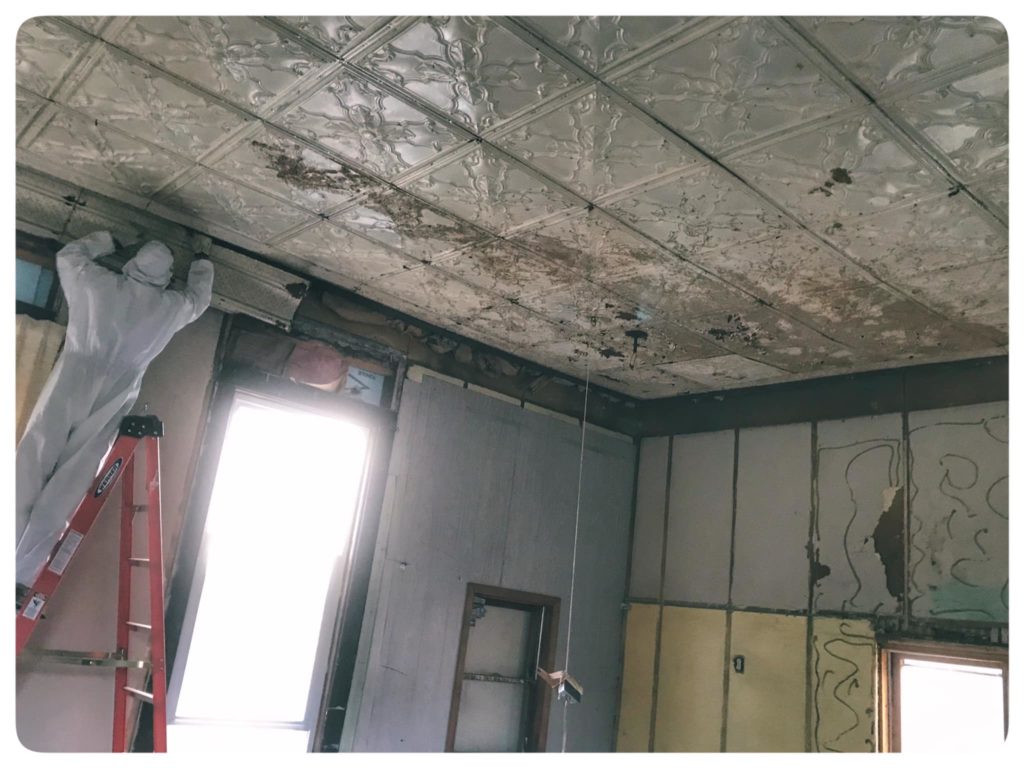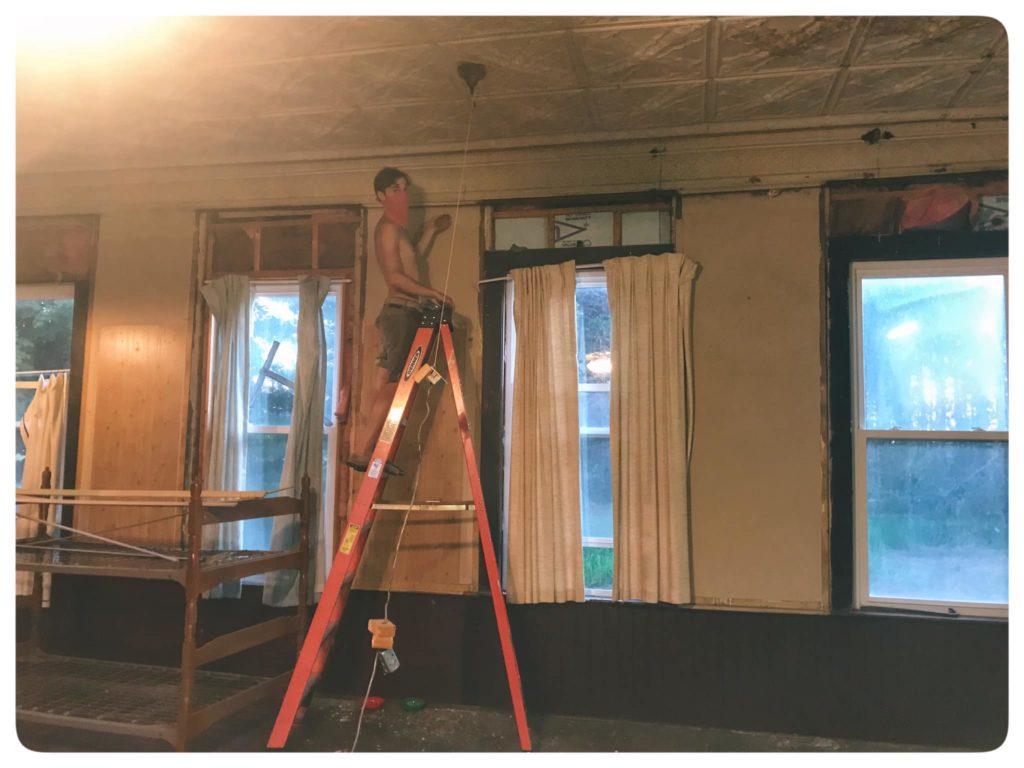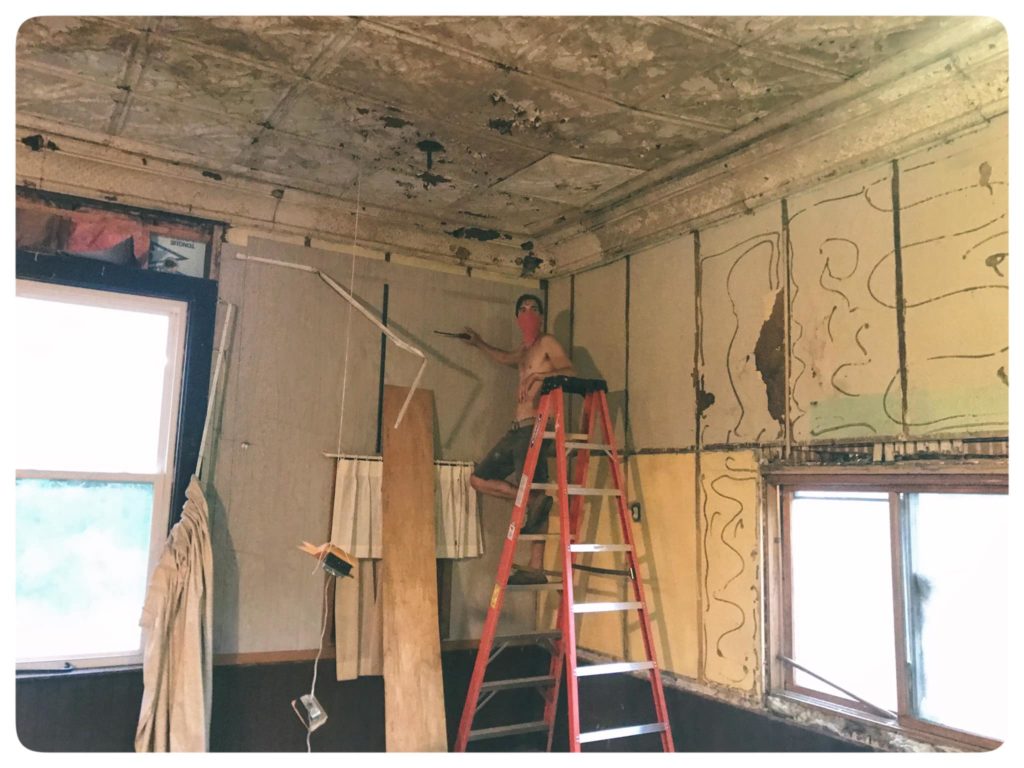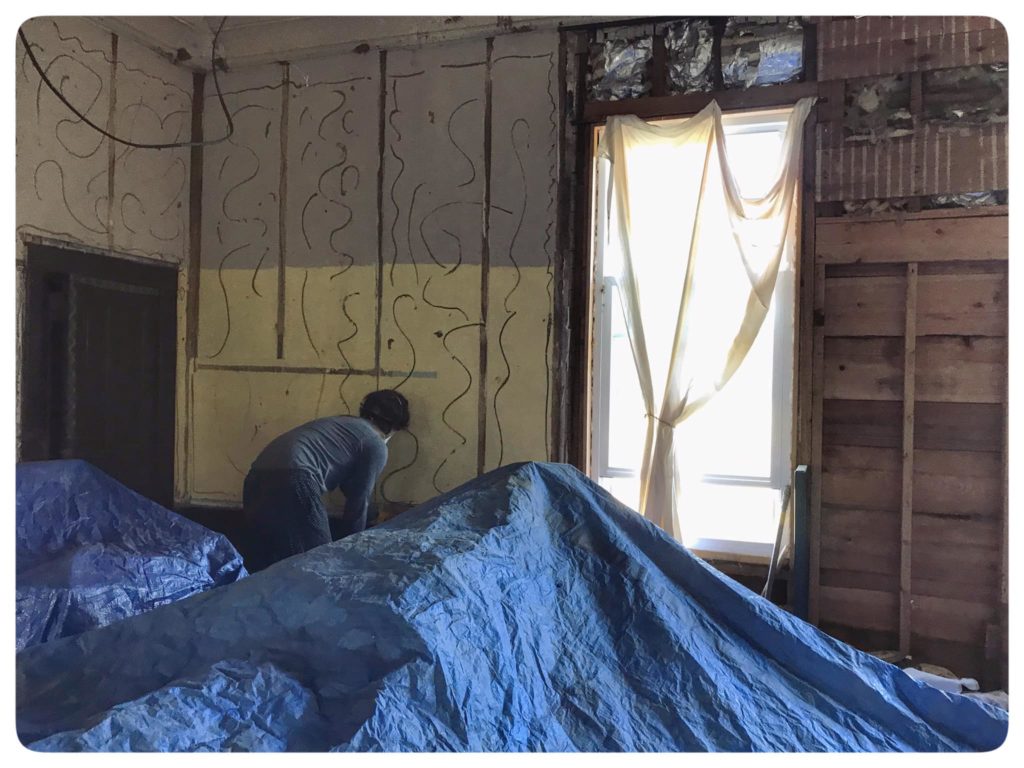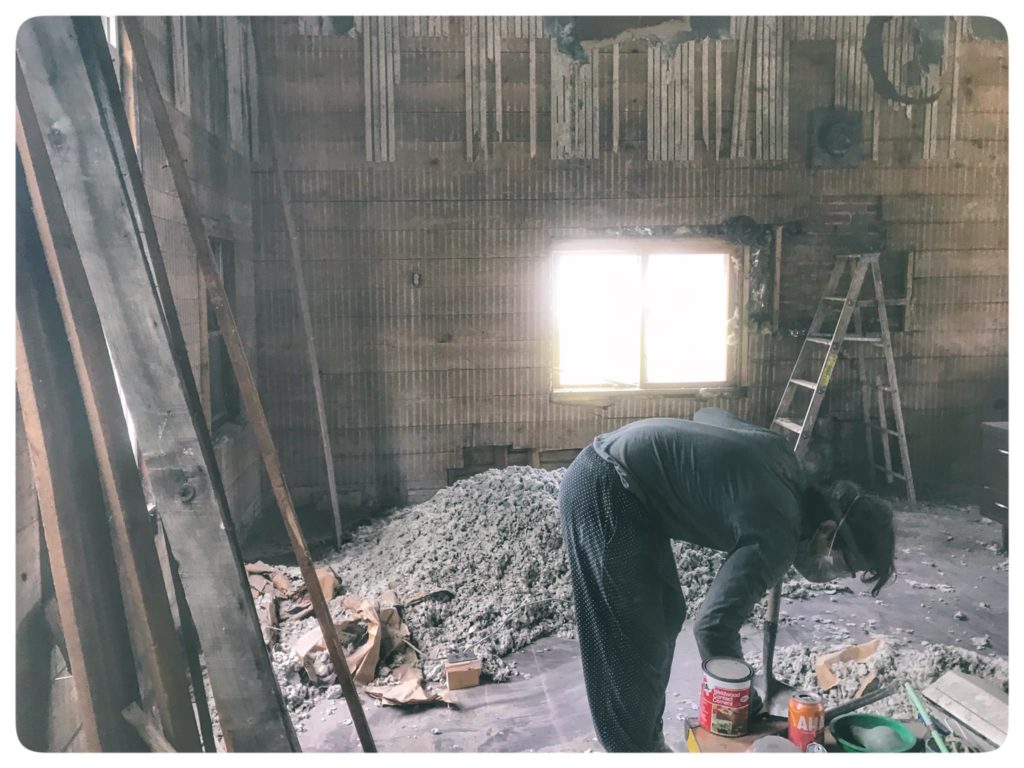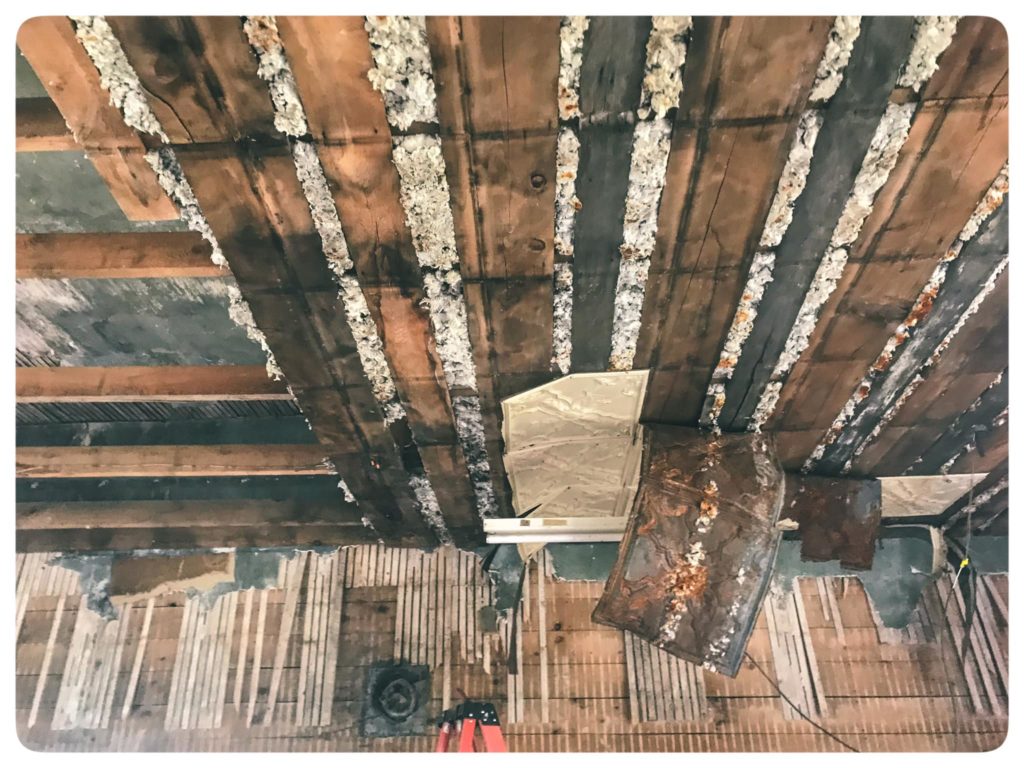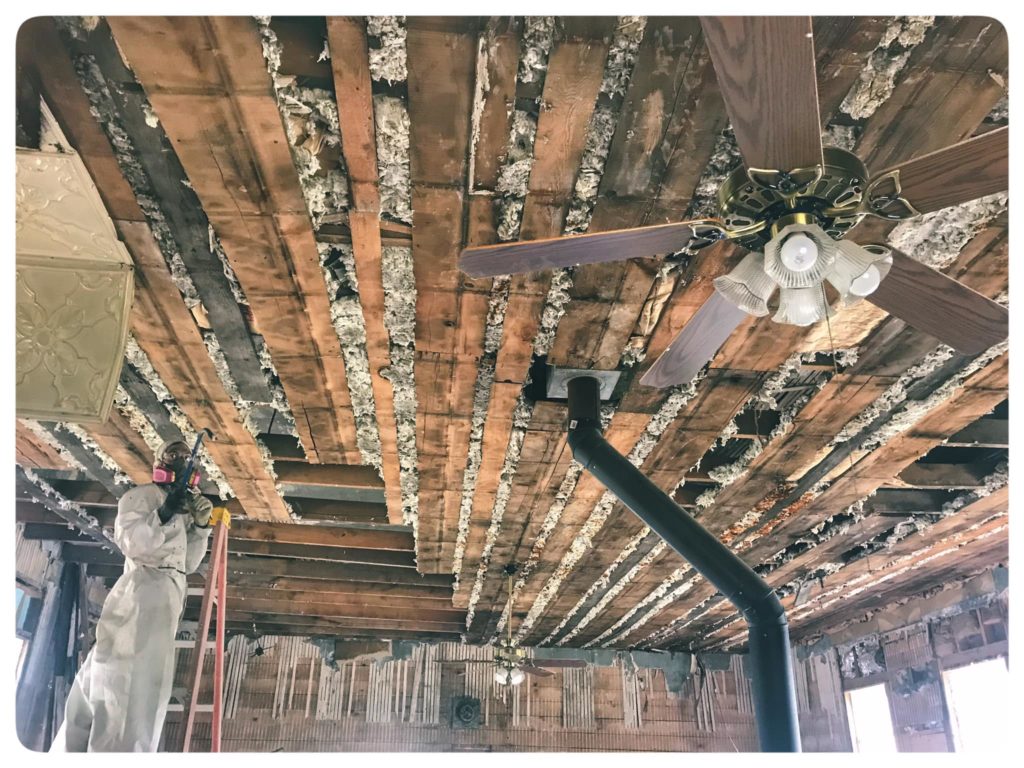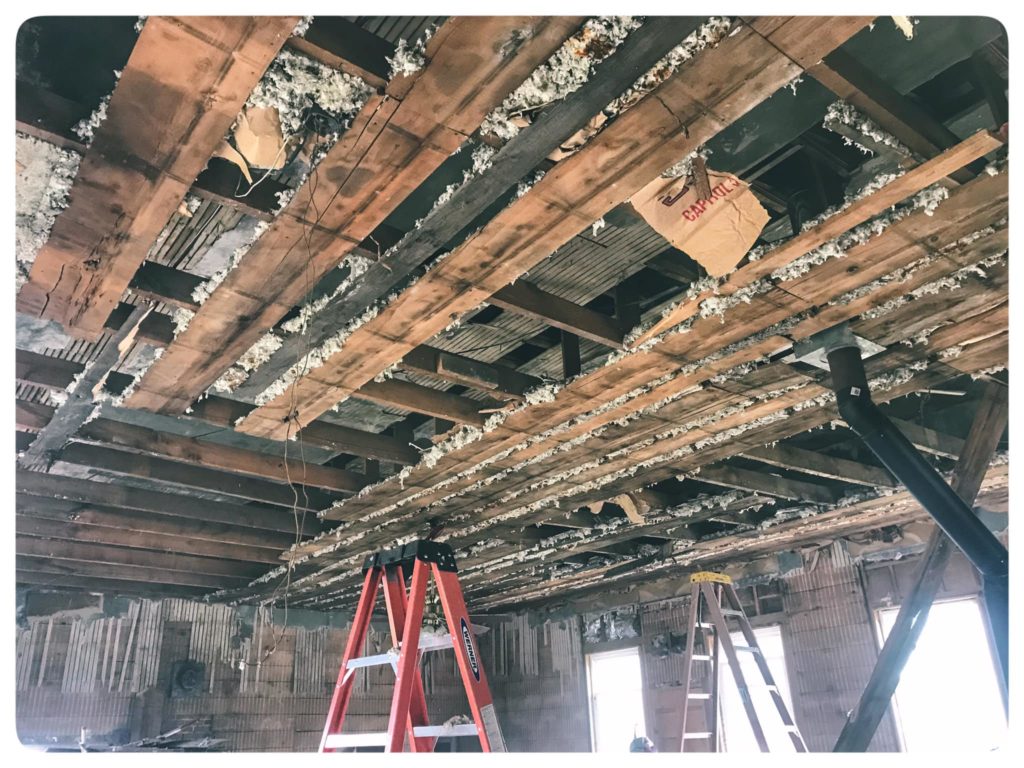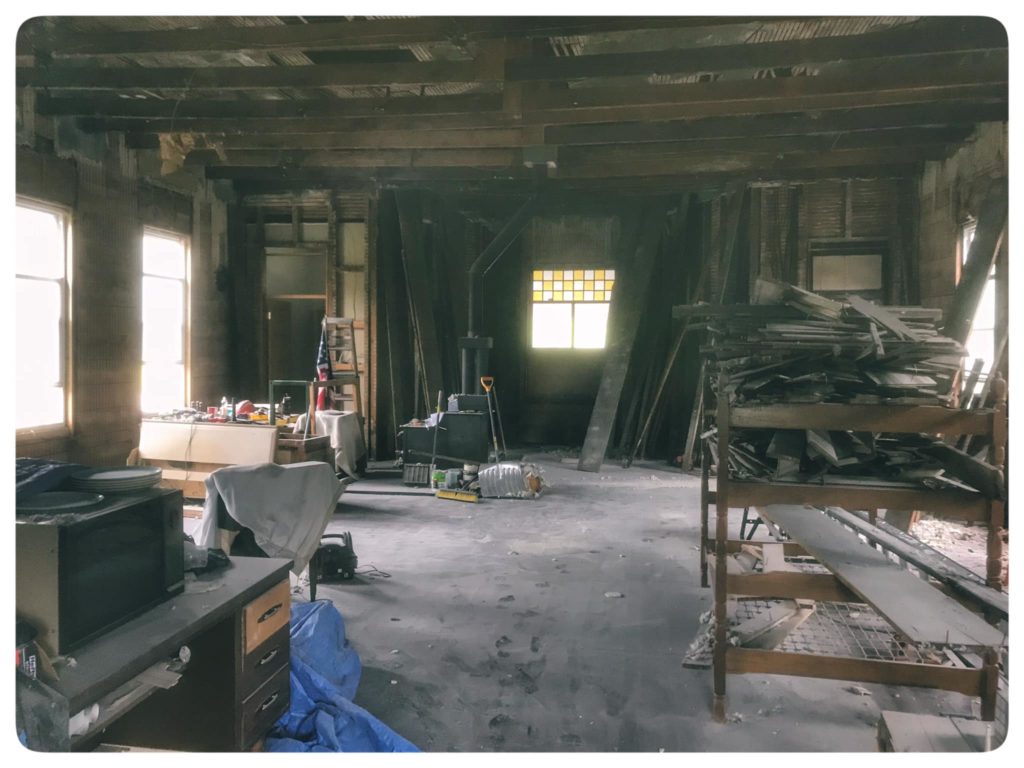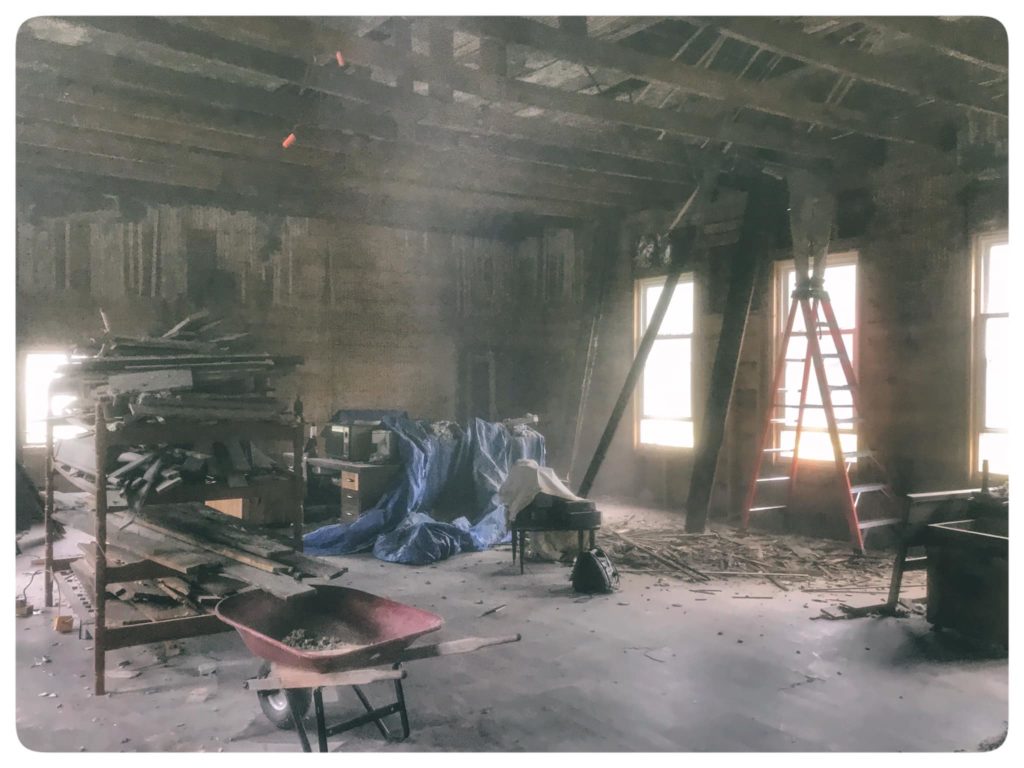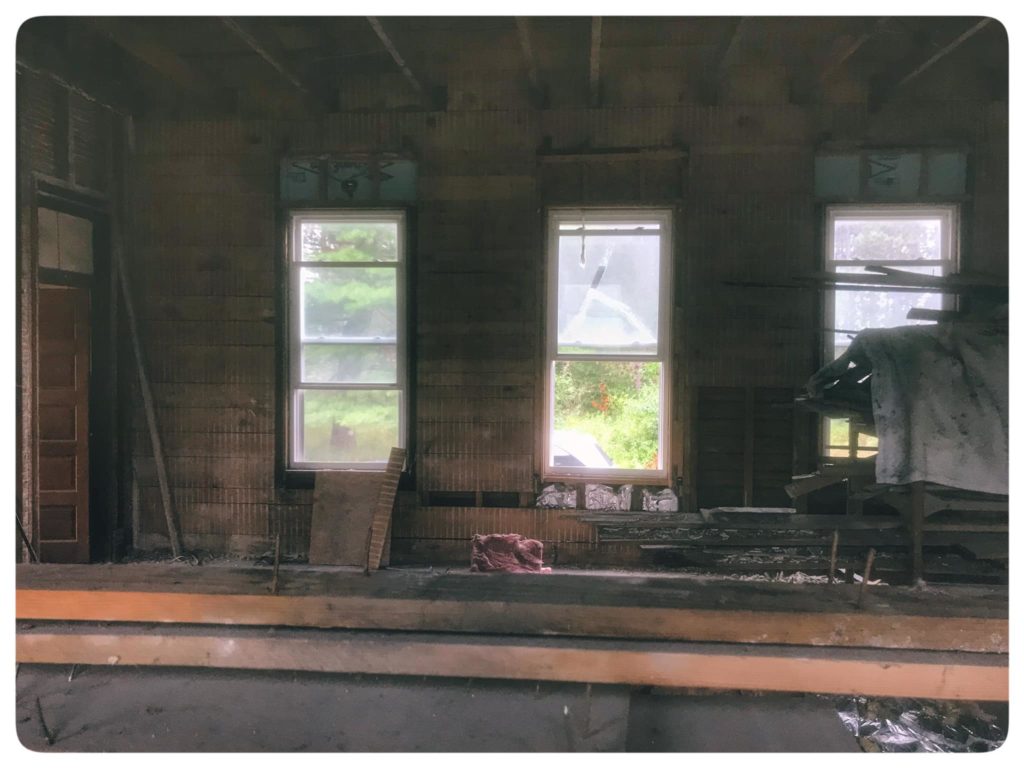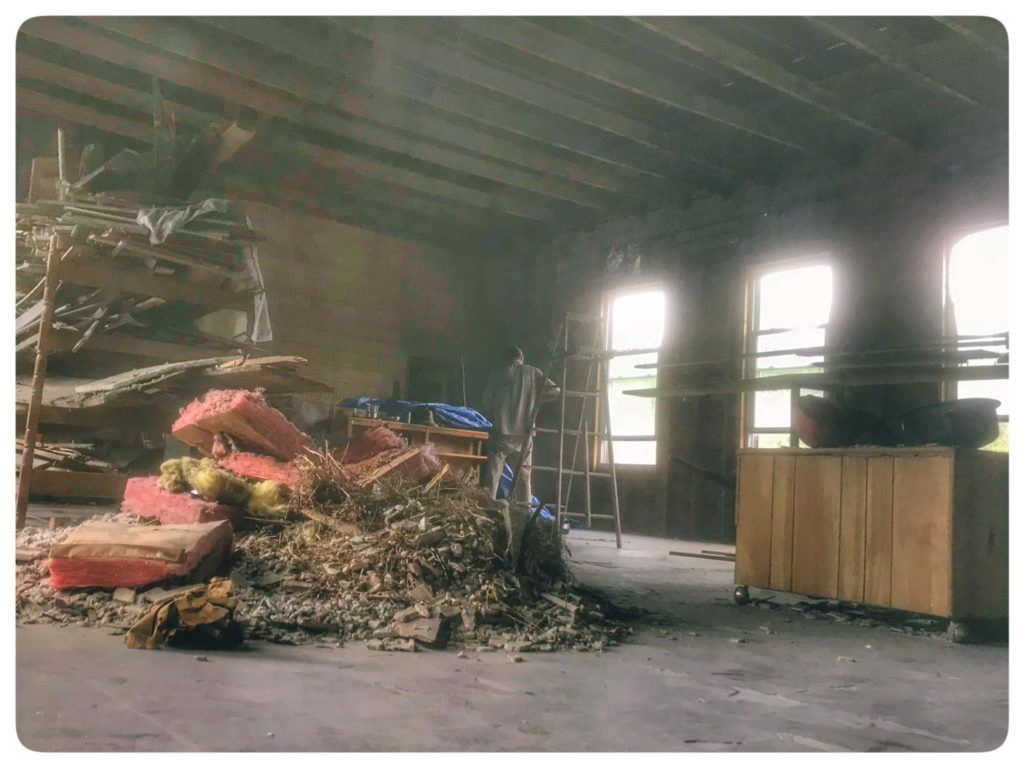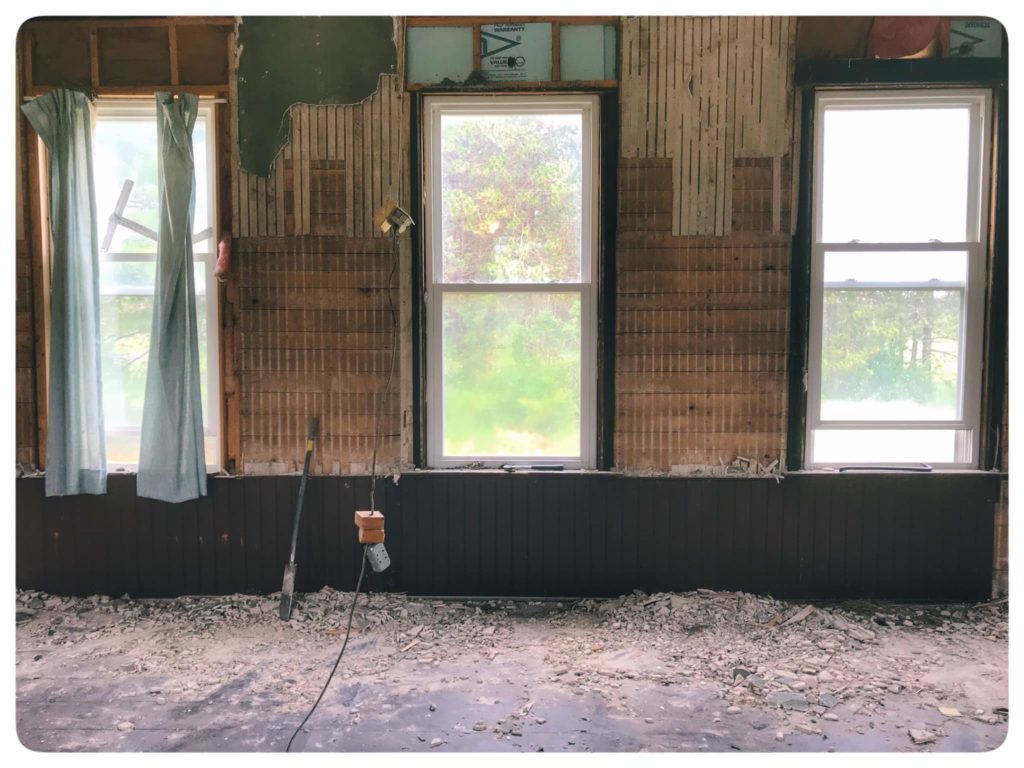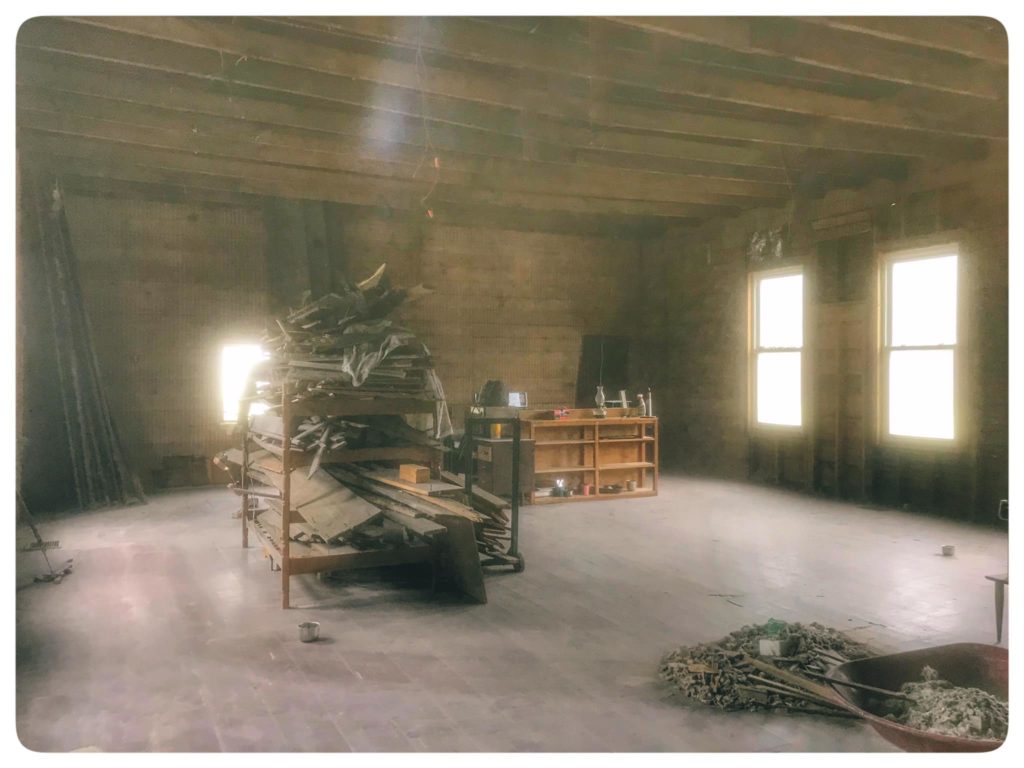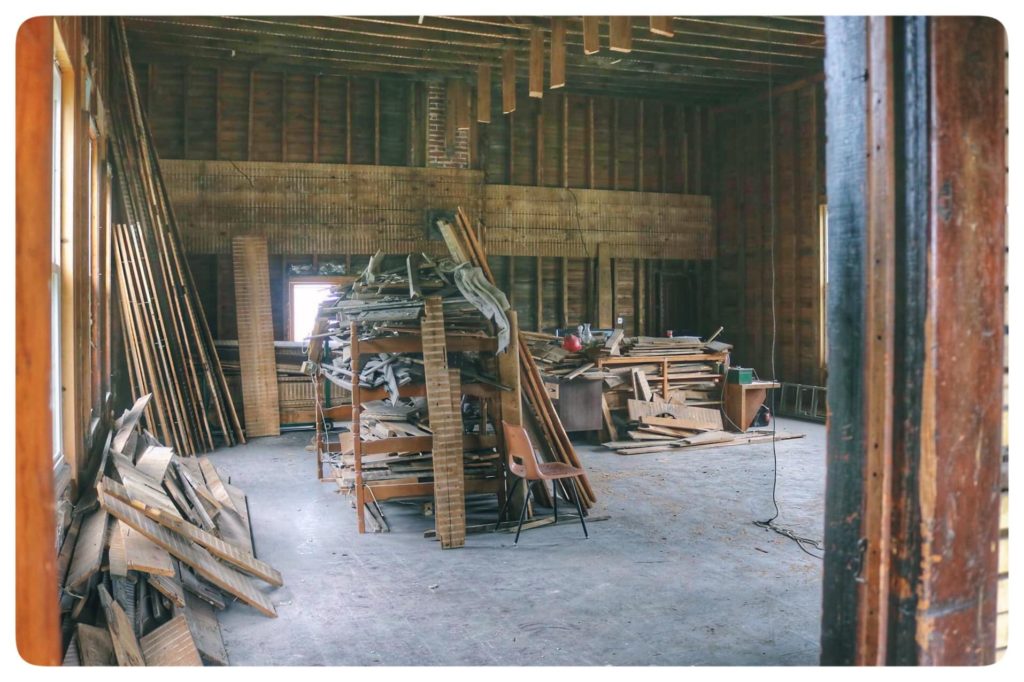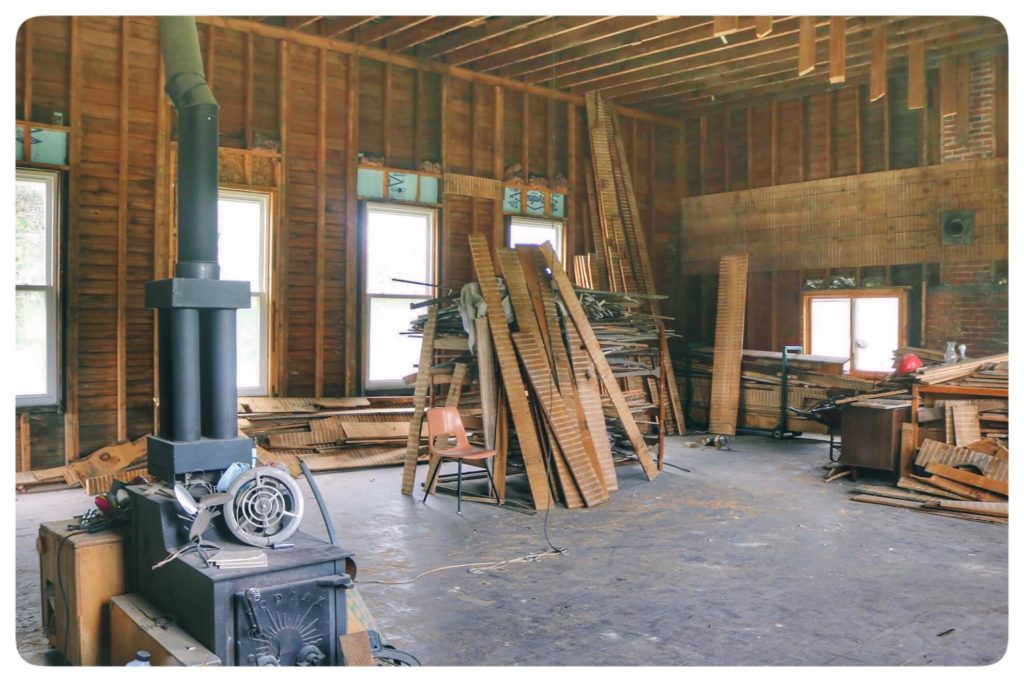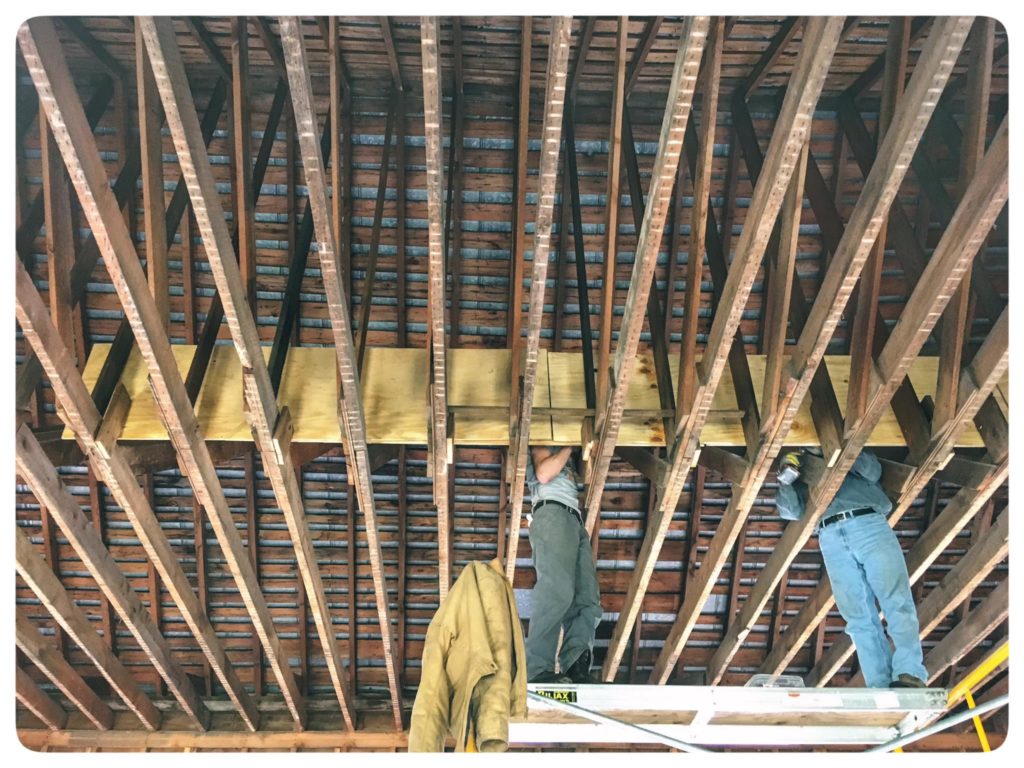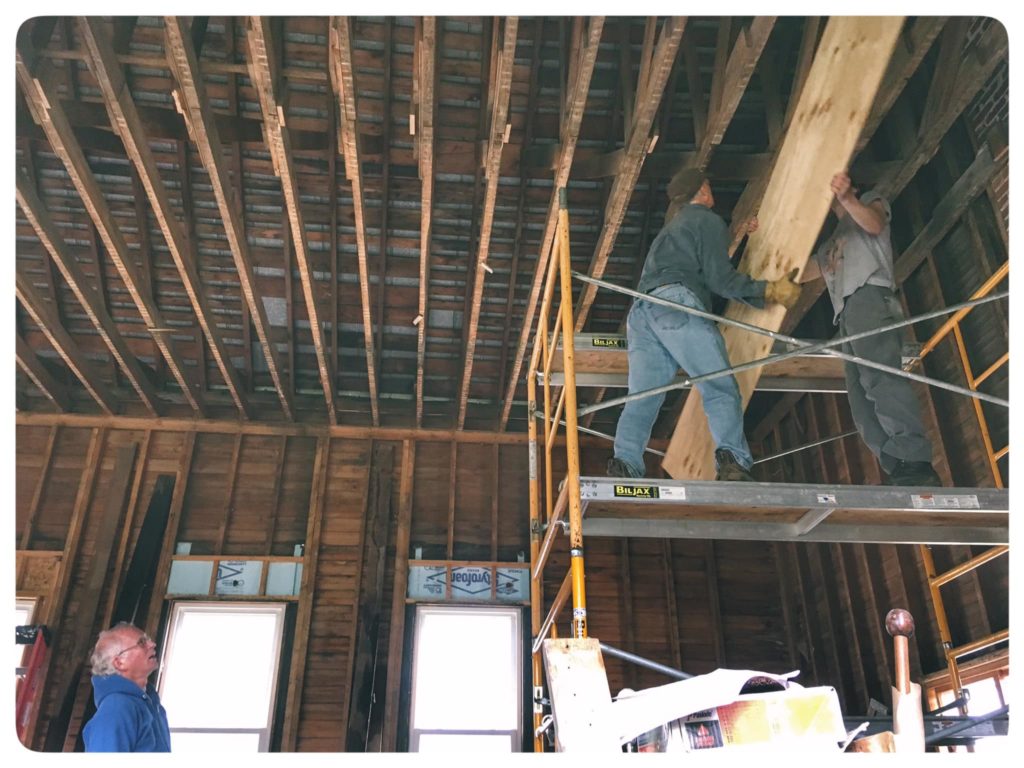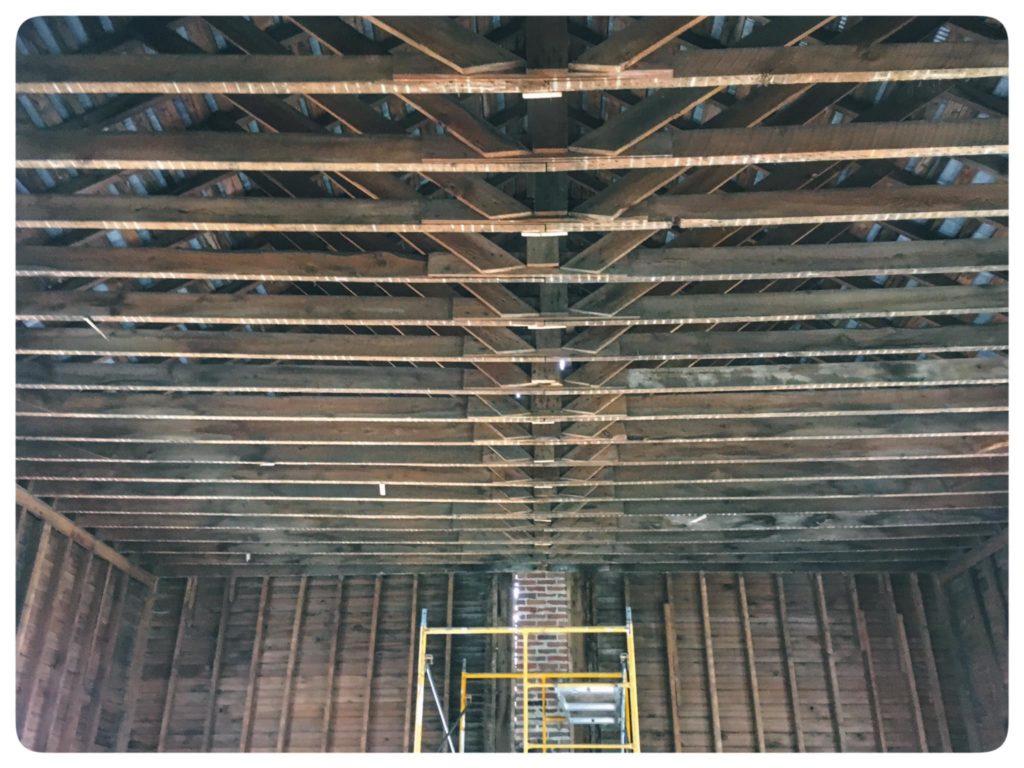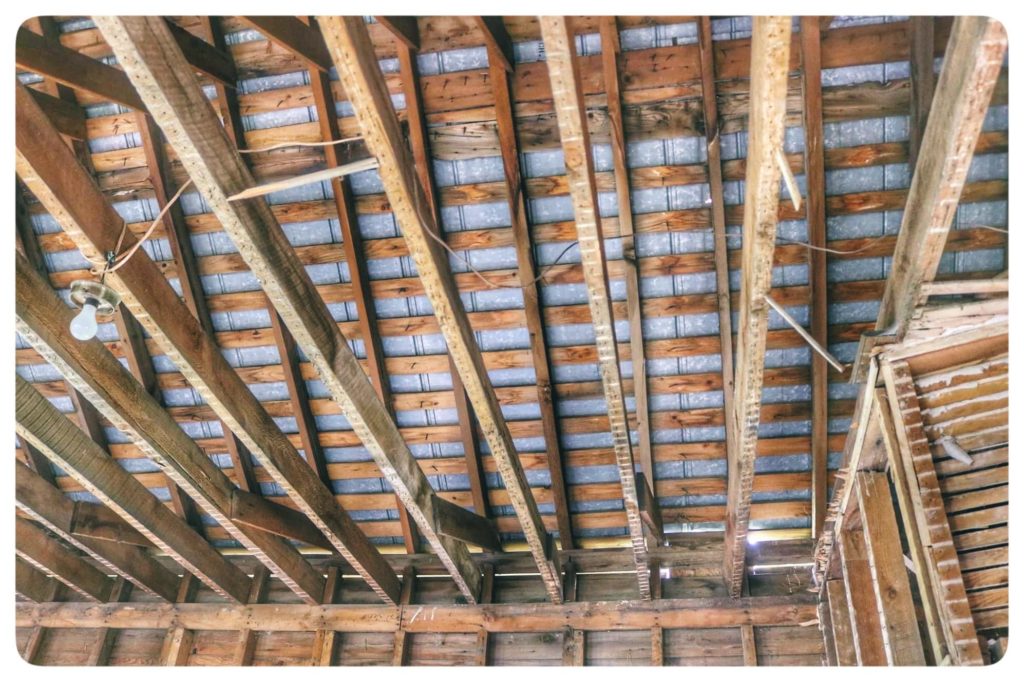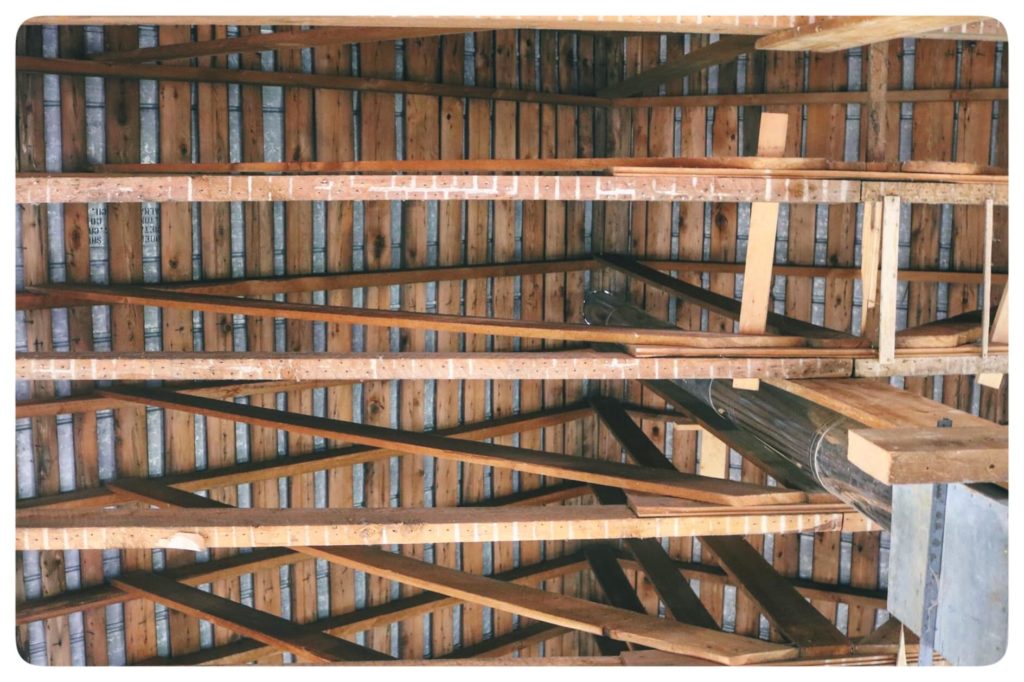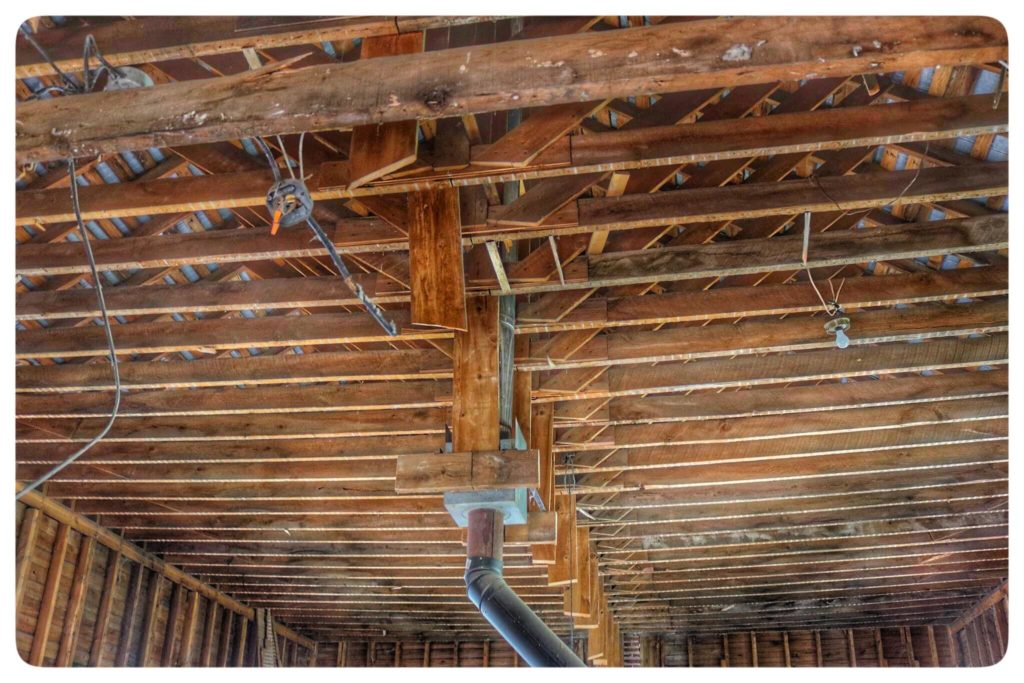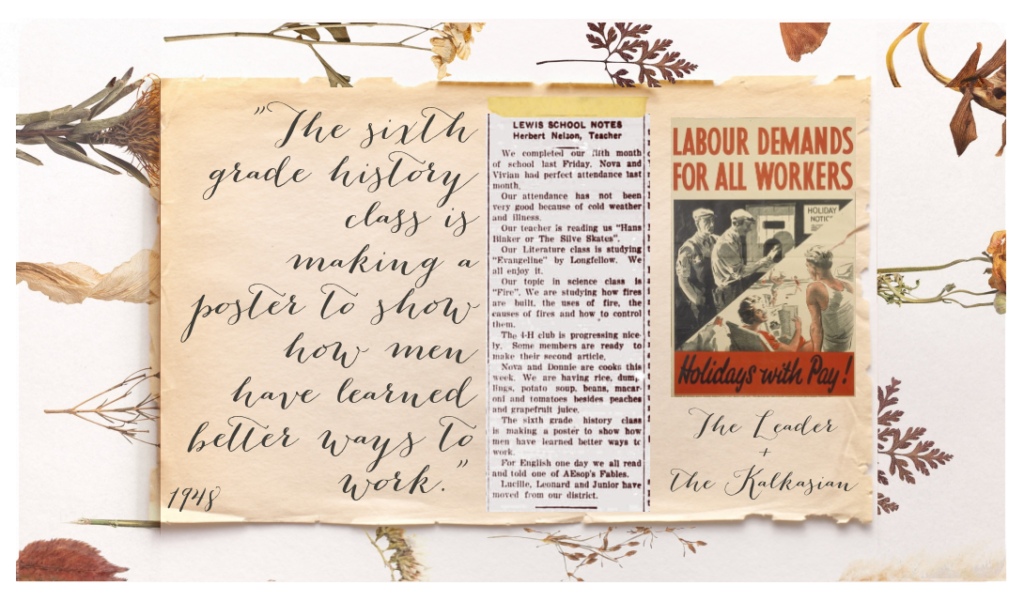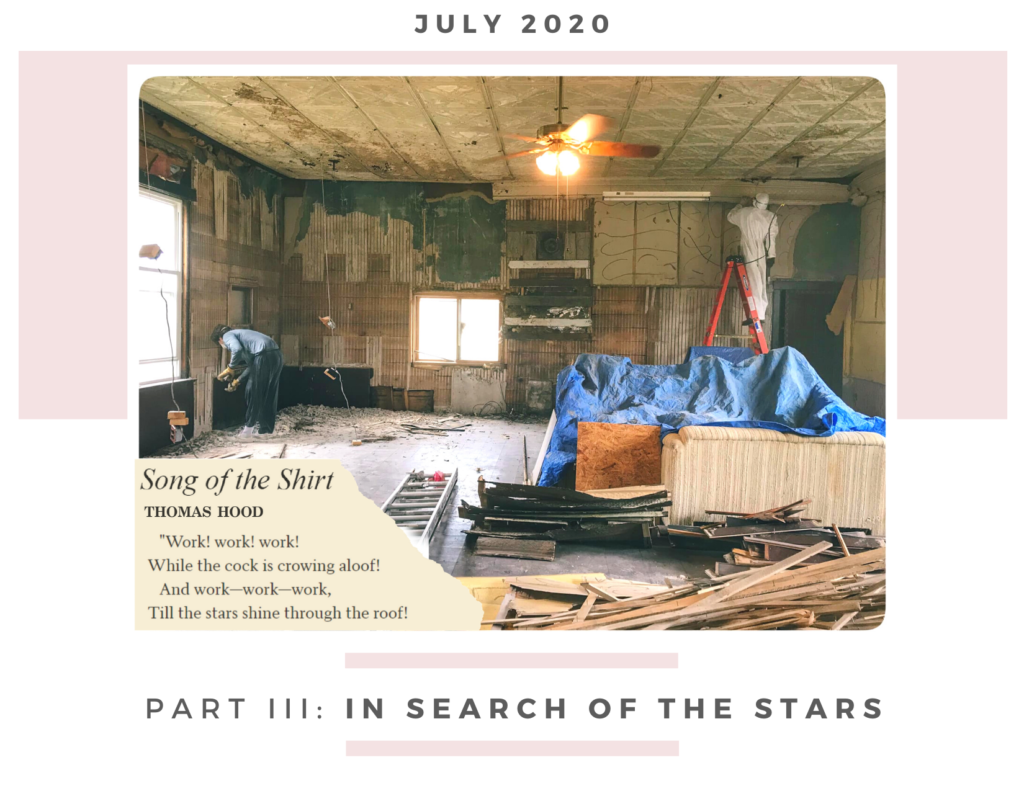
14 feet high and 116 years old, the tin ceiling of the schoolhouse was a point of pride for its students, and one of its most distinctive architectural features. Time and the elements had been hard on it though, and we knew it had to come down. We also knew it was an increasingly time-sensitive project:
leaking roof + rain on the horizon = potential further damage to the ceiling’s structural integrity
We began as we always do by consulting my brother, Kevin (a builder and endless source of practical knowledge), and researching everything we could on the installation and removal of tin ceilings. And then we got going.
Our research mostly suggested that the project would be a nightmare. And all the more so for our determination to preserve the tiles carefully for later use. Among the horror stories, however, were some helpful tips.
The most useful advice can be summed up as follows:
- Start with the cornice. We began by removing the cornice, which is the intricate molding that crowns the wall’s perimeter. Though it sounds obvious, perhaps the most important thing to keep in mind is that removing a tin ceiling is essentially installing a tin ceiling in reverse. That is, you take it apart in the opposite order it was put together. Since the cornice was the last of the ceiling to be installed, this means it is the first piece of the ceiling to be removed.
- Observe. Once we removed the cornice, it was time to observe the seams and patterns of the tiles to determine the last tile laid. If laid correctly, it will typically be located in one of the four ceiling corners, so it wasn’t too tricky to find. Once identified, we went to work on it with hammers and pry bars, and proceeded from there accordingly.
- Gear up. We had already determined that the schoolhouse ceiling was free of asbestos, but still found the proper protective gear to be crucial. Due to the haphazard addition of various layers of schoolhouse over the years, plaster, insulation, straw, and other debris seemed to burst from every cavity we opened. Hooded coveralls, a good respirator, and both head and eye protection were essential. The edges of the tin tiles can be incredibly sharp, so a good pair of work gloves was also a must. Even all geared up, we were still filthy by lunchtime.
Though we were able to get a head start on cornice-removal after returning from a lake outing on the 4th of July, we unfortunately had to drive back downstate to Detroit on the 5th for a busy couple of work weeks. We returned to the scene of the mess two weeks later ready to finally finish what we had started.
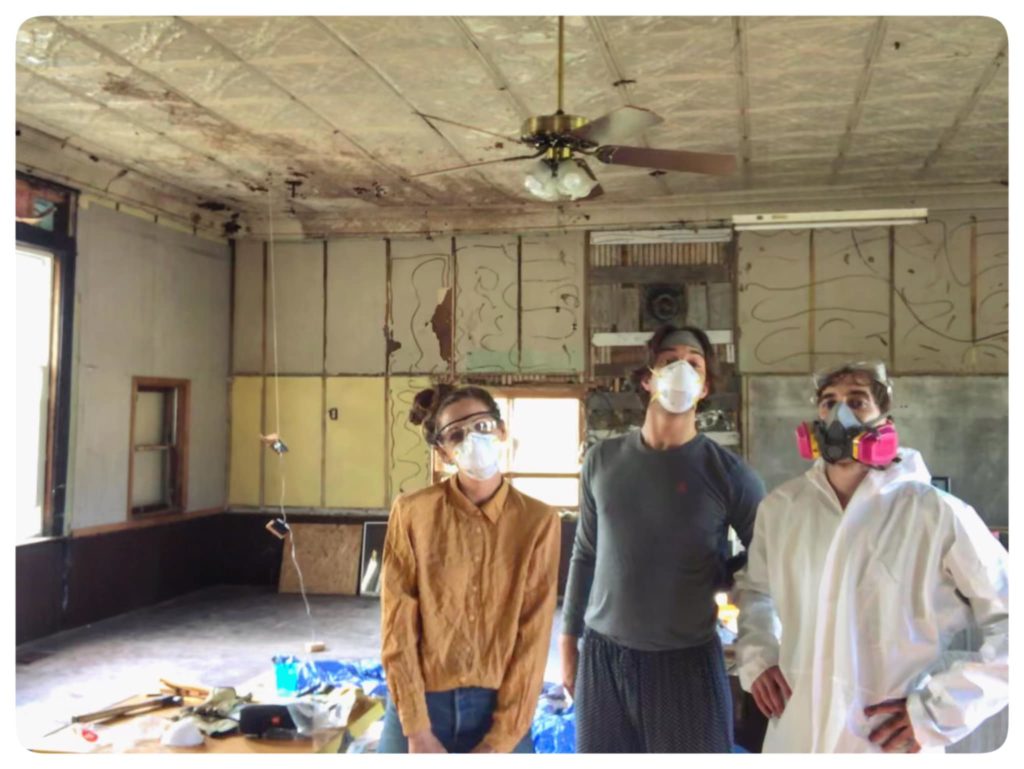
Our crew of two had expanded to three with the recent addition of Connor’s youngest brother, Phill, and later to five when their dad, Bill, and oldest brother, Pete, stopped by to volunteer their services.
As a proud unionized workforce, we at the Lewis School are entitled to a minimum of three breaks per day. These provided a good opportunity to wander the surrounding tree farm catching up with loved ones, savoring some fresh air together, and remembering the natural wonders that drew us there in the first place.
I know thank you doesn’t cut it, and I know we ostensibly “enjoyed” our time together, but nonetheless, thank you.

The additional help allowed us to tackle several projects simultaneously: while Bill put his masonry skills to work outside on the crumbling porch and stairway, the rest of us worked inside carefully removing ceiling tiles atop 12′ ladders, prying off wall panels with tree dibbles, sweeping ceiling debris into trash bags, and loading them into the truck out front via a makeshift wheelbarrow ramp. Once the truck was full, we took turns pairing off for trips to the nearby dump to unload. While this job was my least favorite, the drive to the dump at least offered a brief respite and a bit of nice scenery.
While I lost track of how many truckloads to the dump it took to clear the schoolhouse of debris, I do know it took us a total of 12 hours to fully remove the tin ceiling. I glanced out the windows and up at the clock frequently to mark the passing of the hours, often finding myself bewildered by how slowly they drifted by. While donning a Tyvek suit and hoisting my sixth load of heavy tin tiles to haul down the basement stairs , I wondered if perhaps time had stopped entirely. The stillness of the clouds visible through the window, scattered in a windless sky, seemed only to confirm this.
I imagine it wasn’t so different for the Lewis School Students and Teachers of Years Past. I like to think they too sometimes took comfort in glances at the sky’s weary movements through the classroom windows, or at the lazy hands of the ticking clock.
The deeper I immerse myself in my research, and the more the ancient dust of the schoolhouse gets on me, the more I am struck by these feelings of connection across the decades. It is as though that dust is imbued with a spirit altogether apart from time – one manifest in a classroom’s afternoon daydreams, or the chinks of light in the untouched corner of an attic.
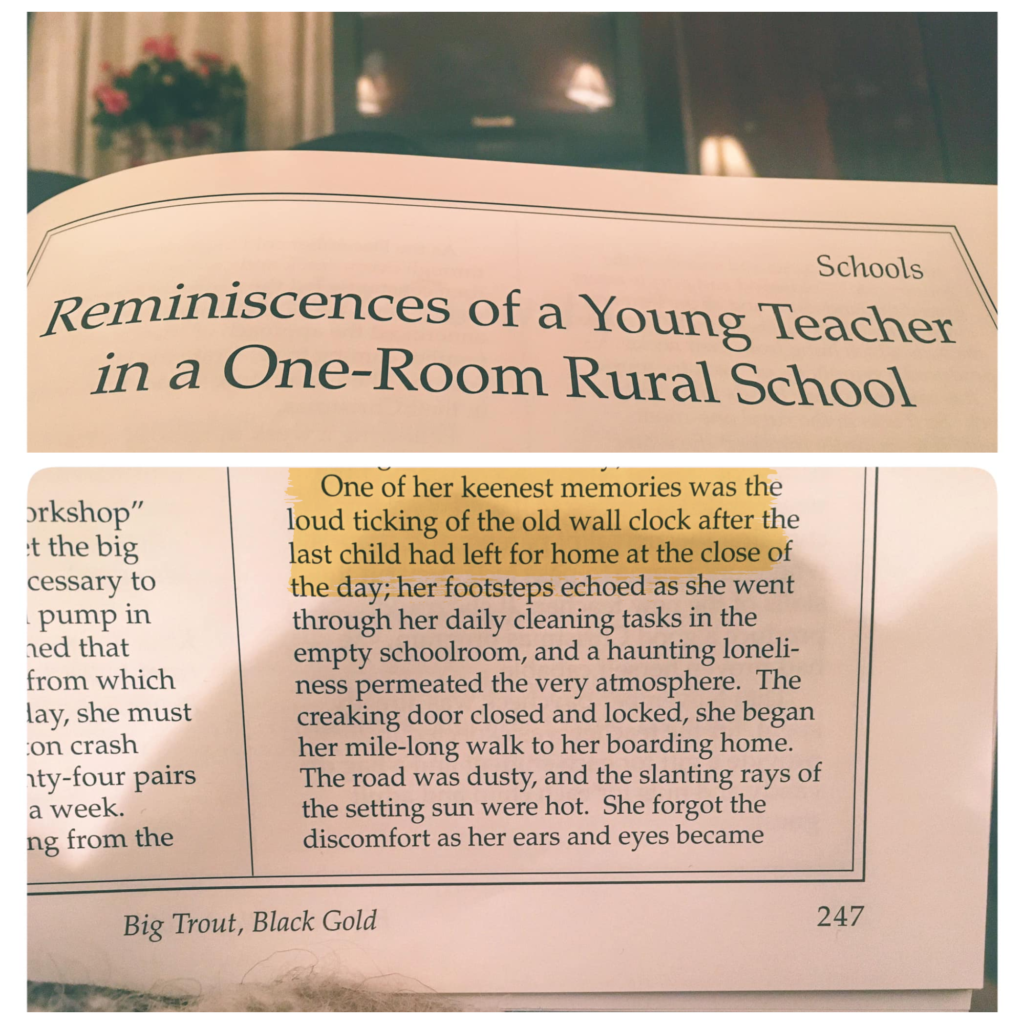

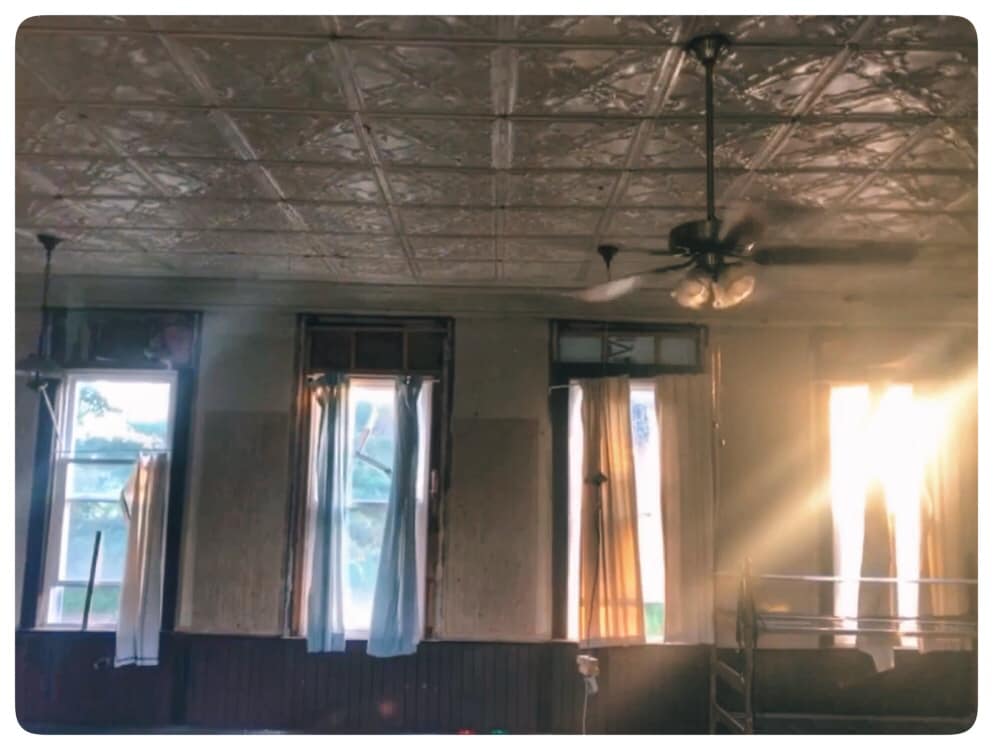
After many years of good and faithful service (and great effort on our part), the ceiling tiles are now enjoying a well-deserved rest in the basement. We look forward to restoring them to their original glory, someday.
“Someday” projects continue to pile up, of course, as we attend to the immediate. We will see what Northern Michigan Time permits.
Liza + Connor
